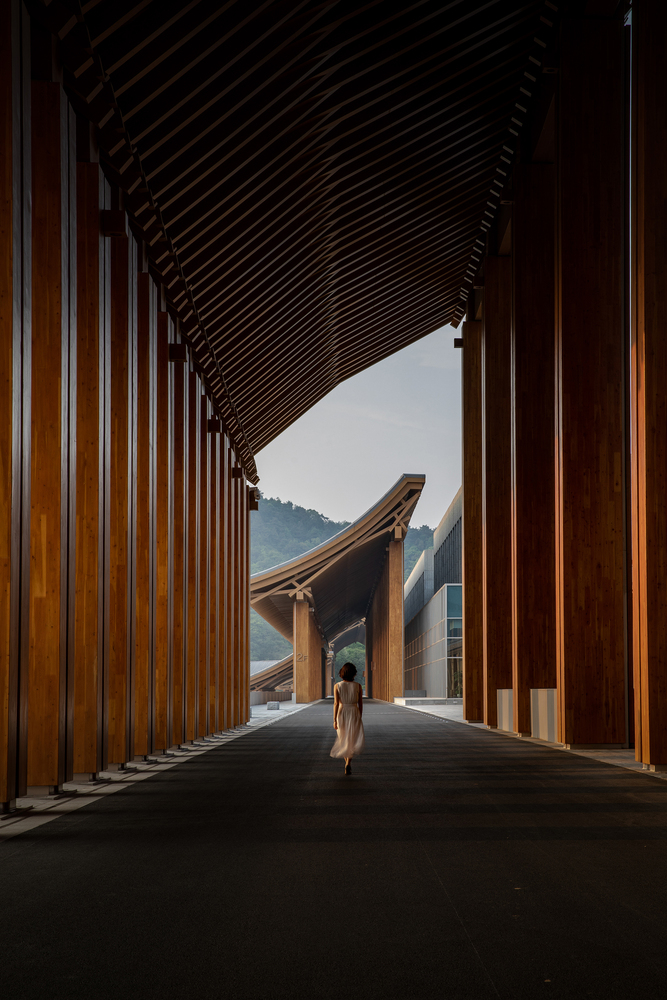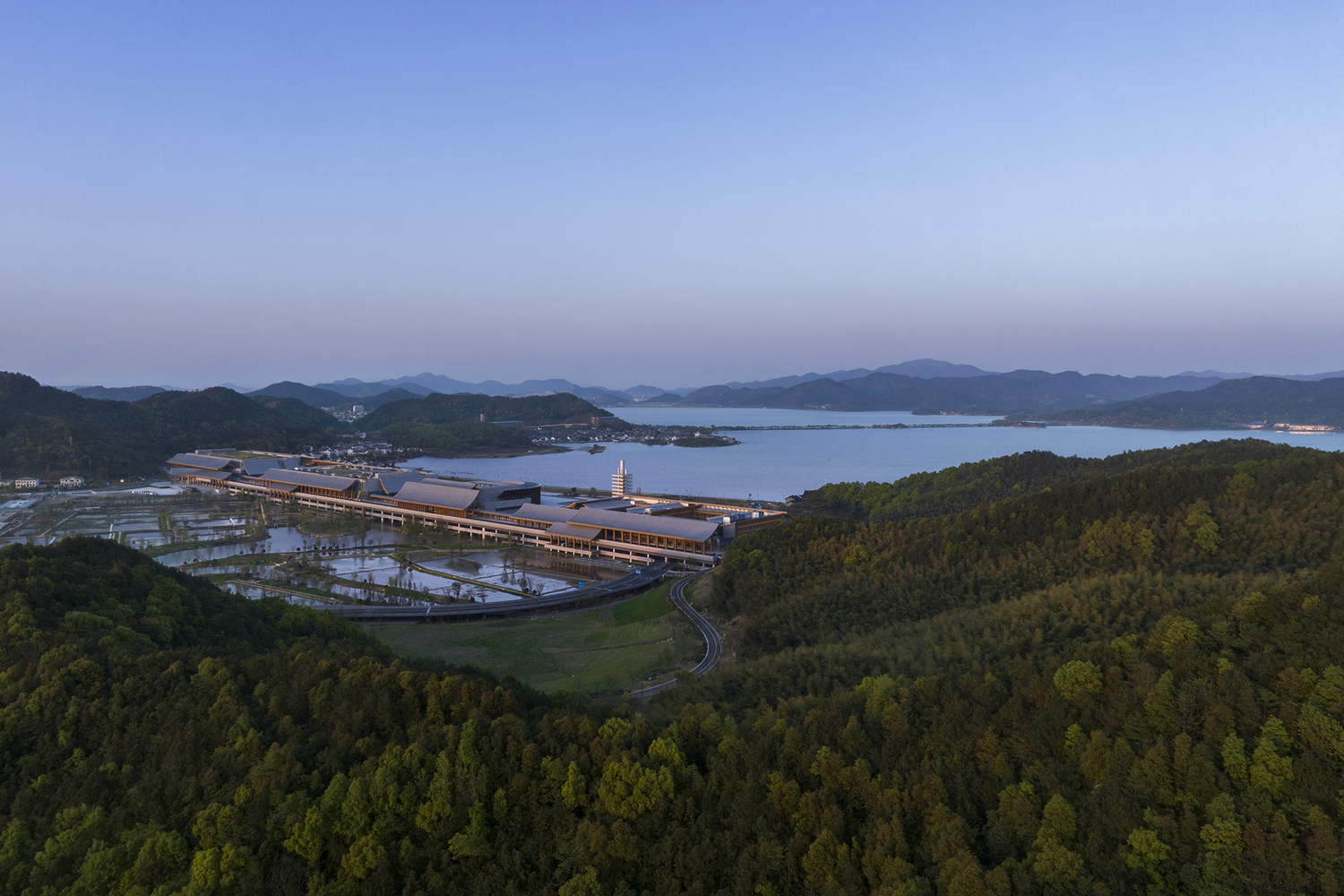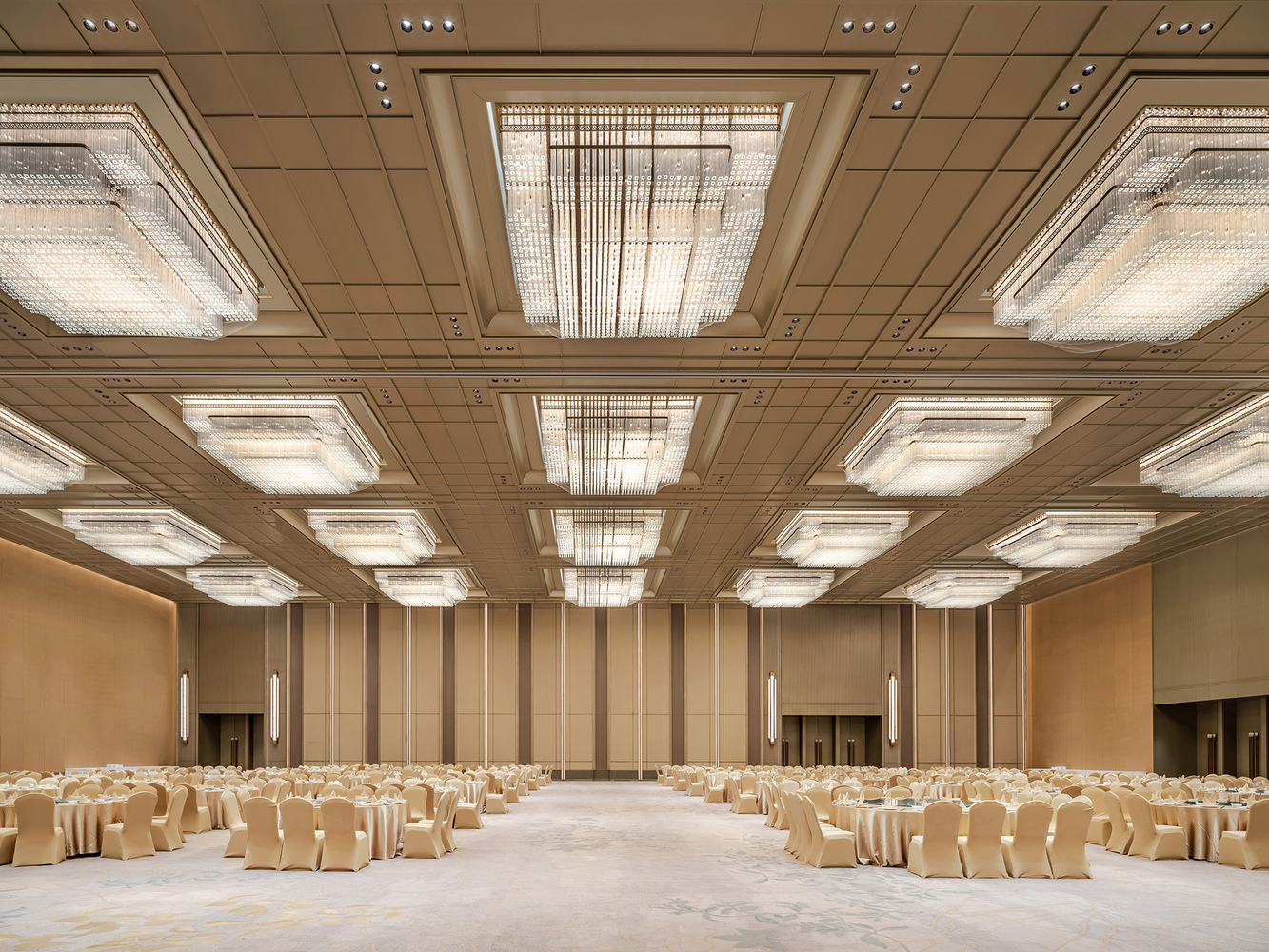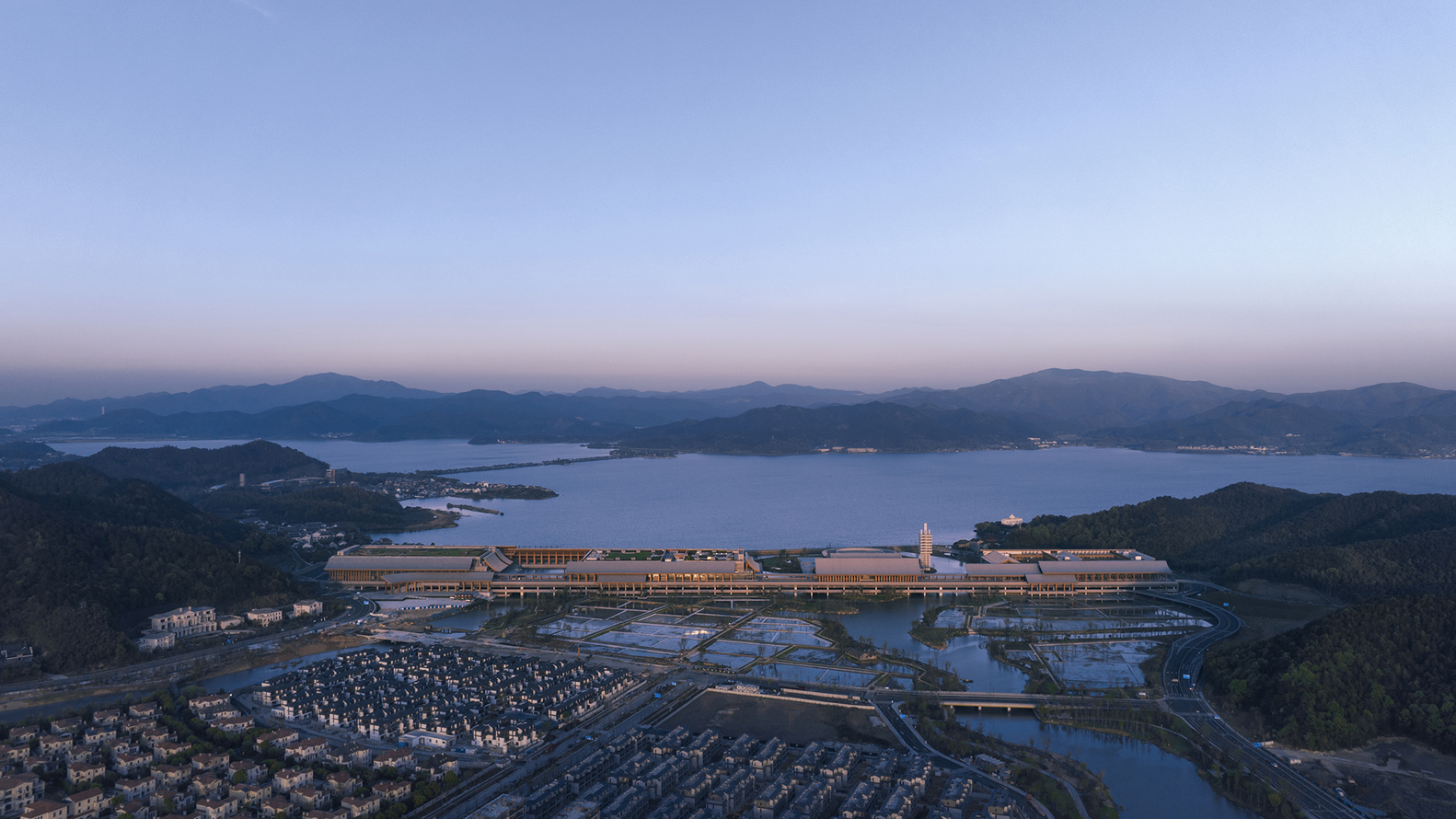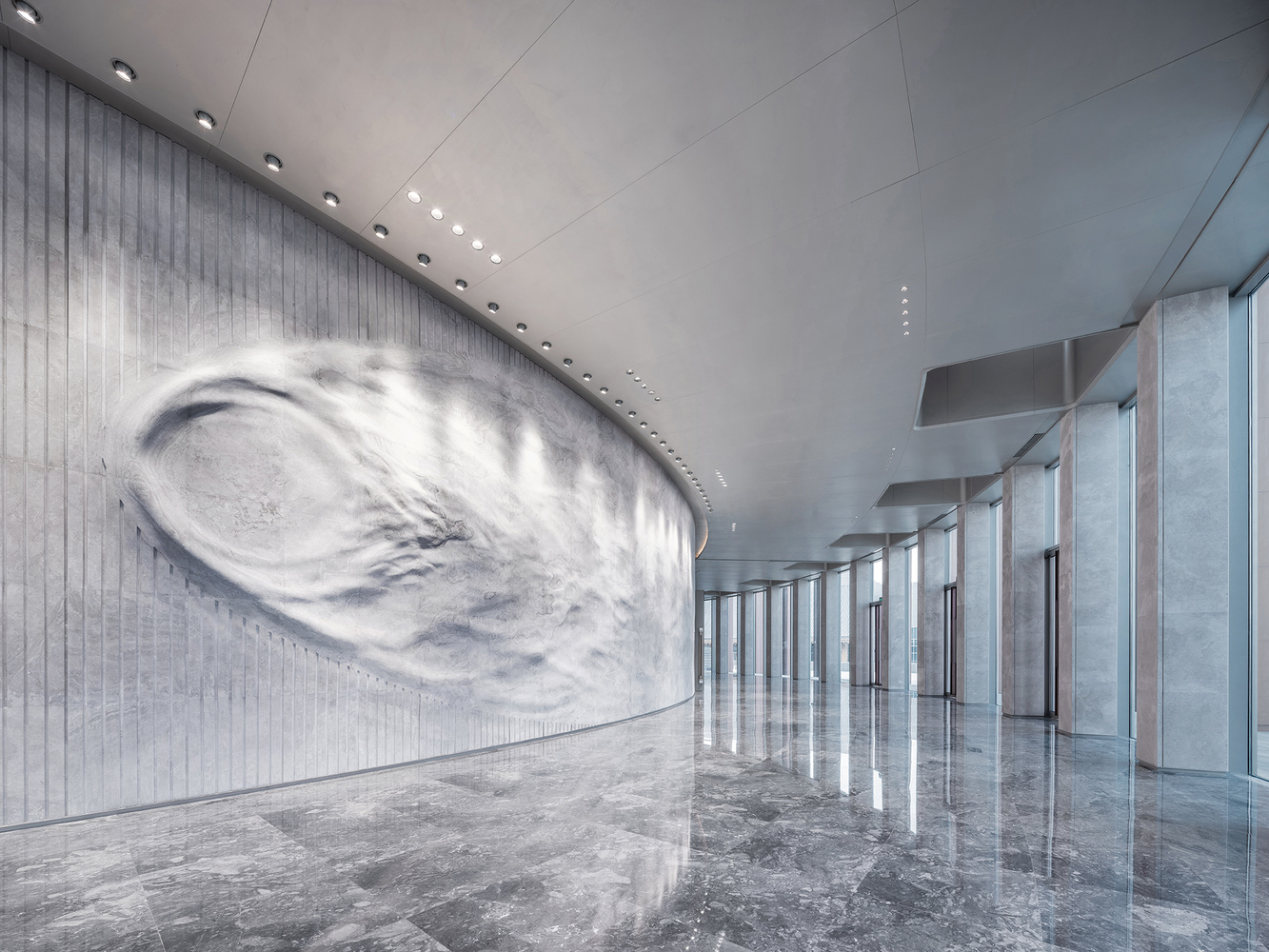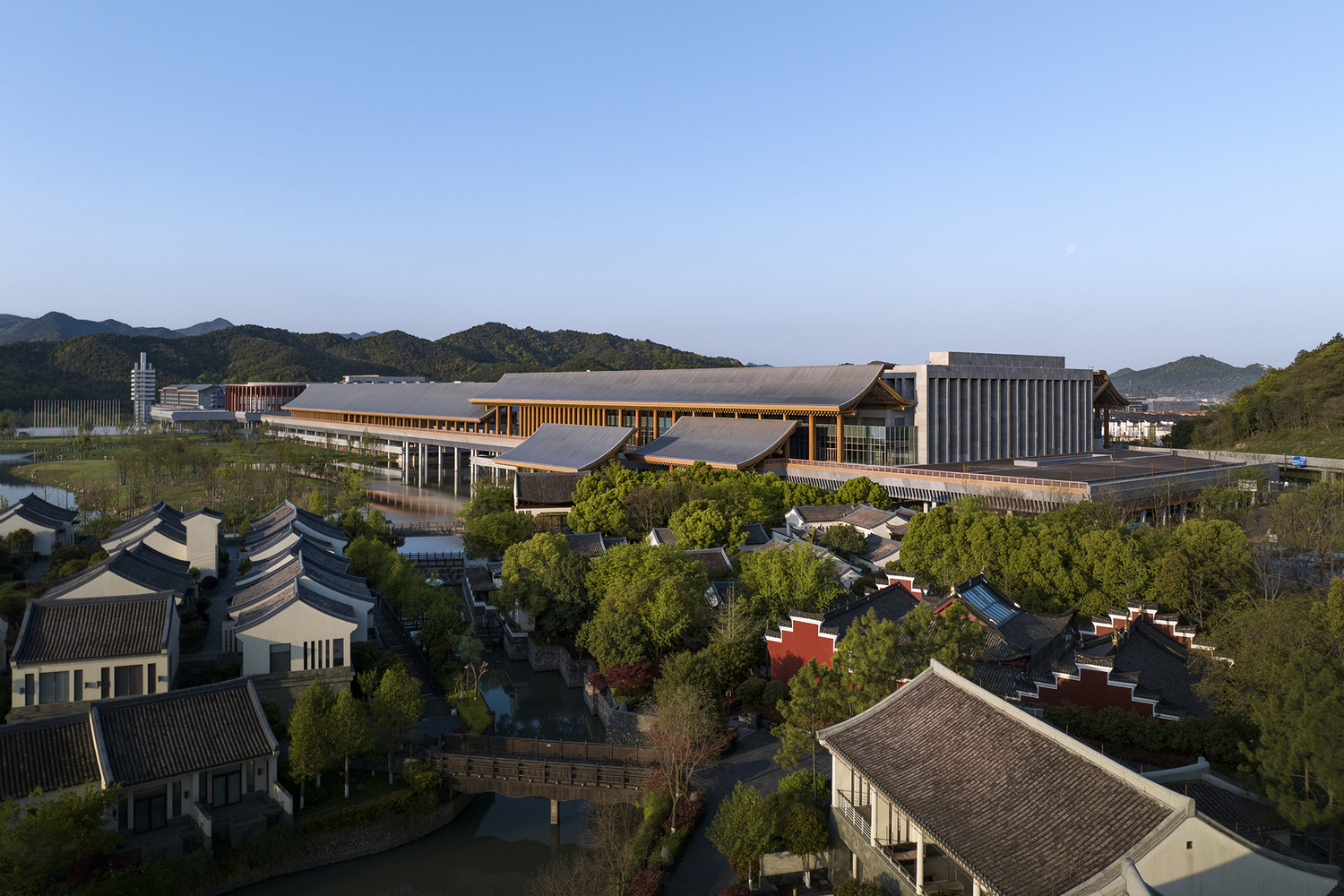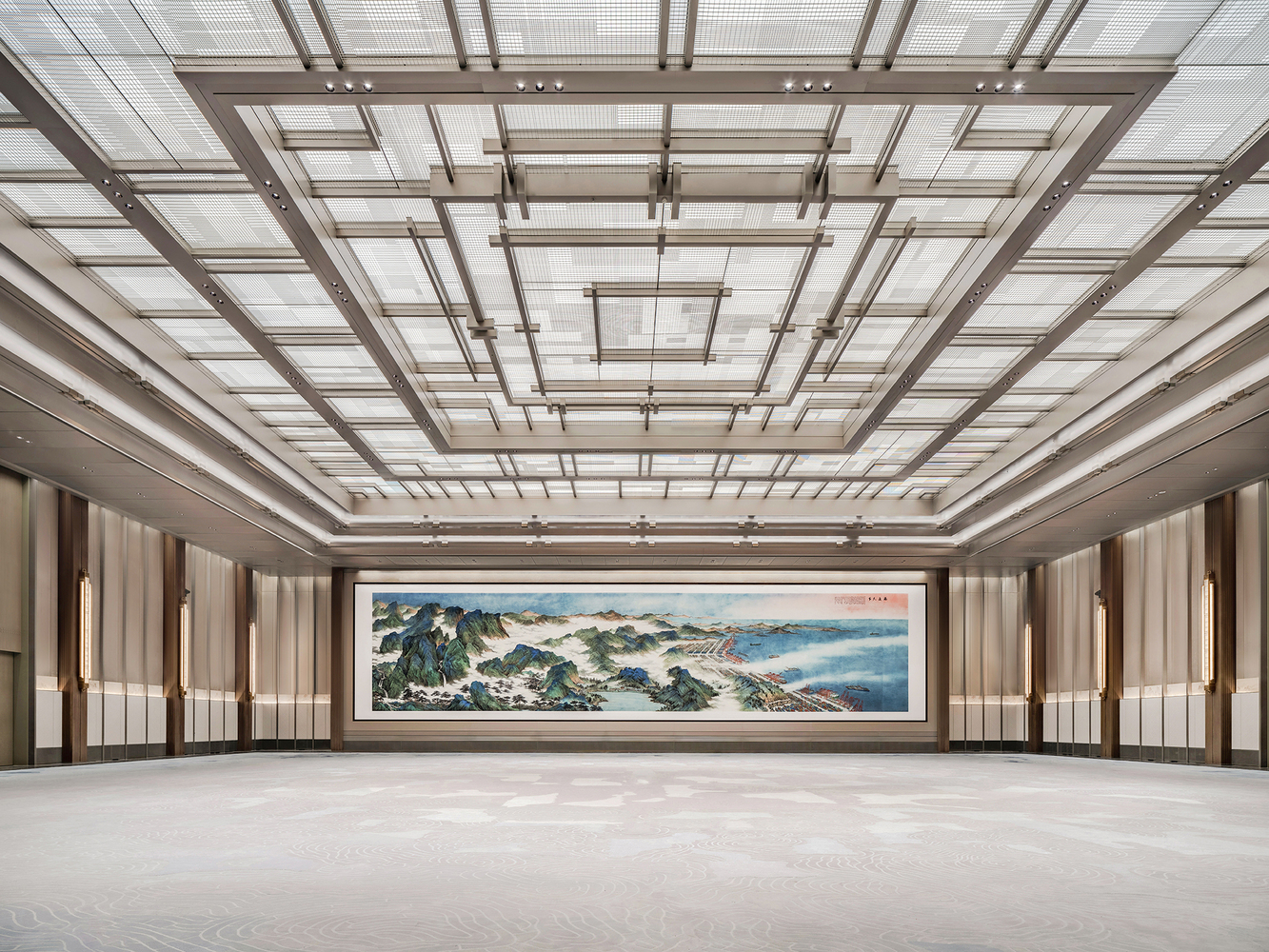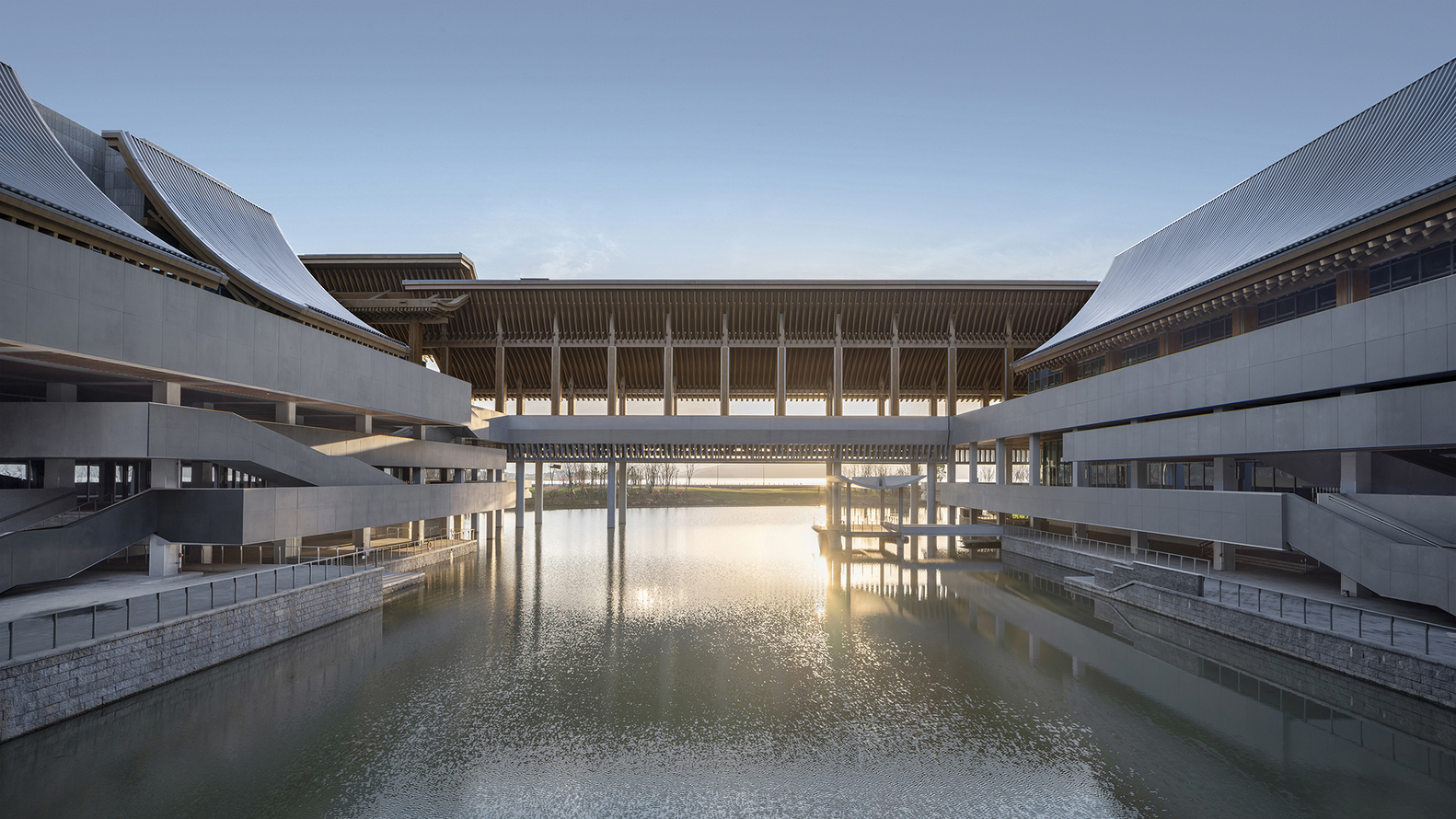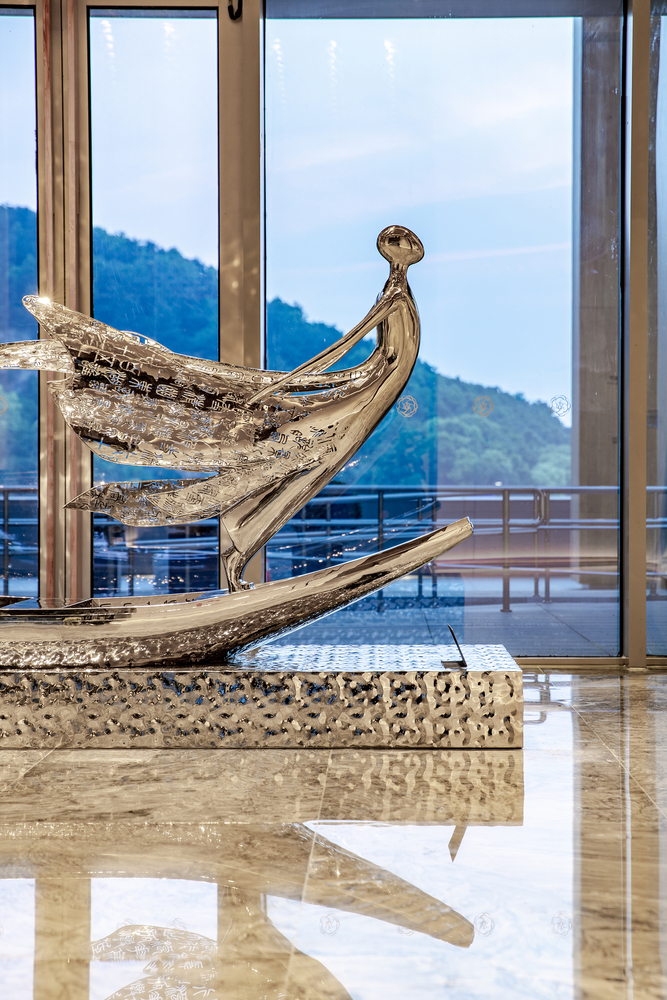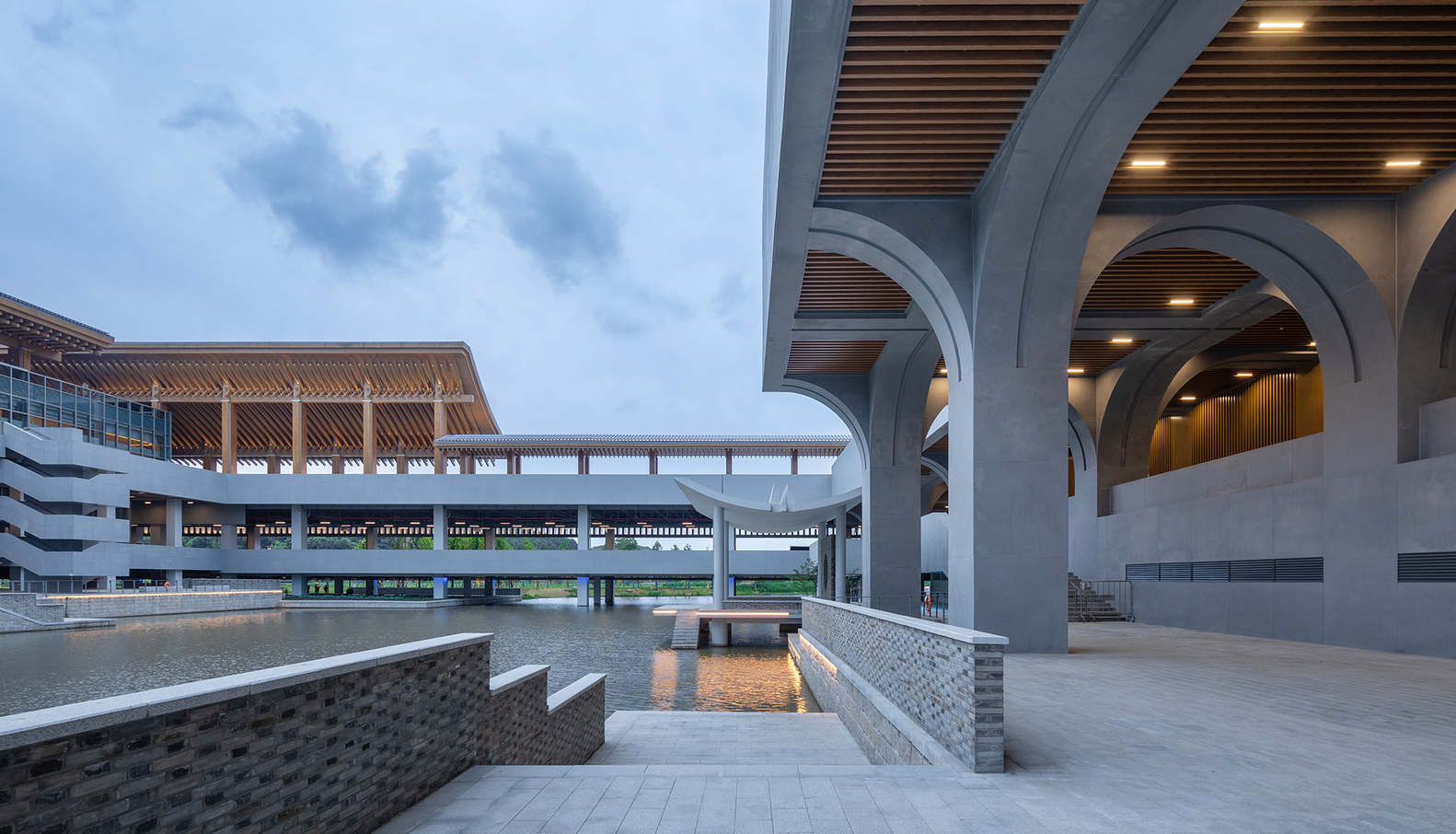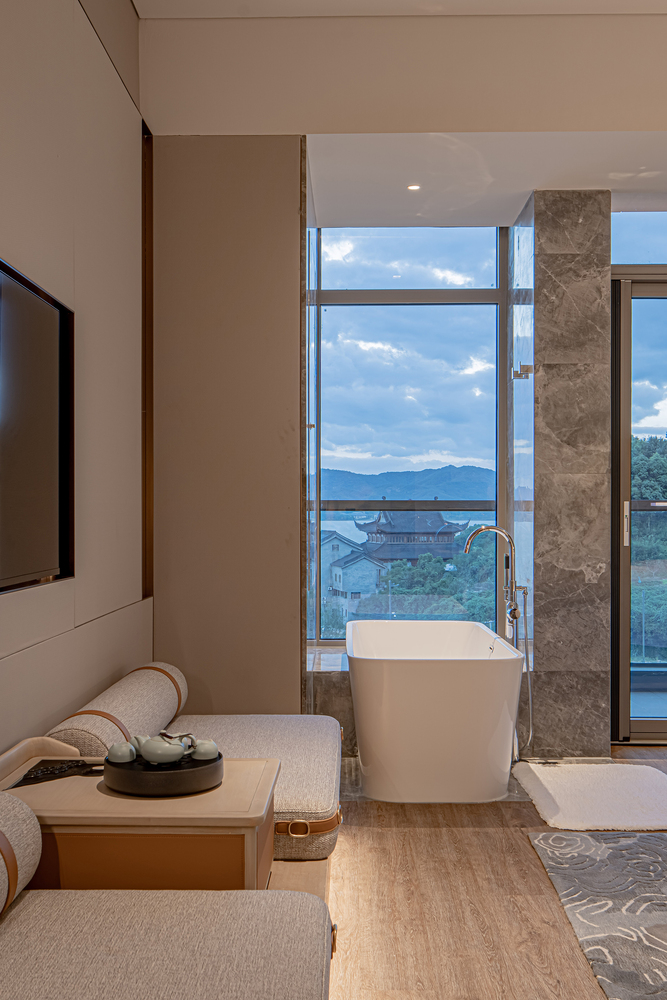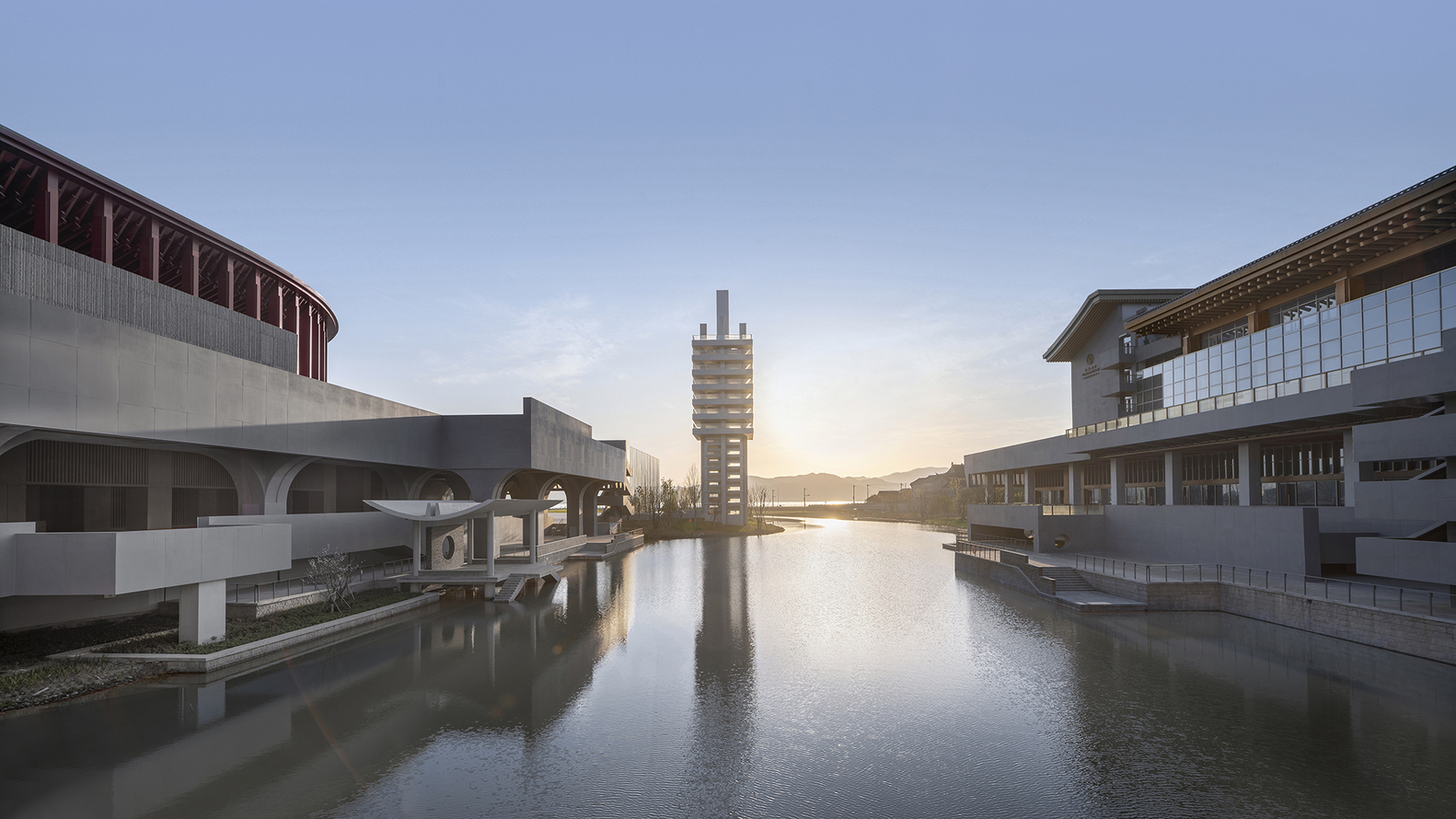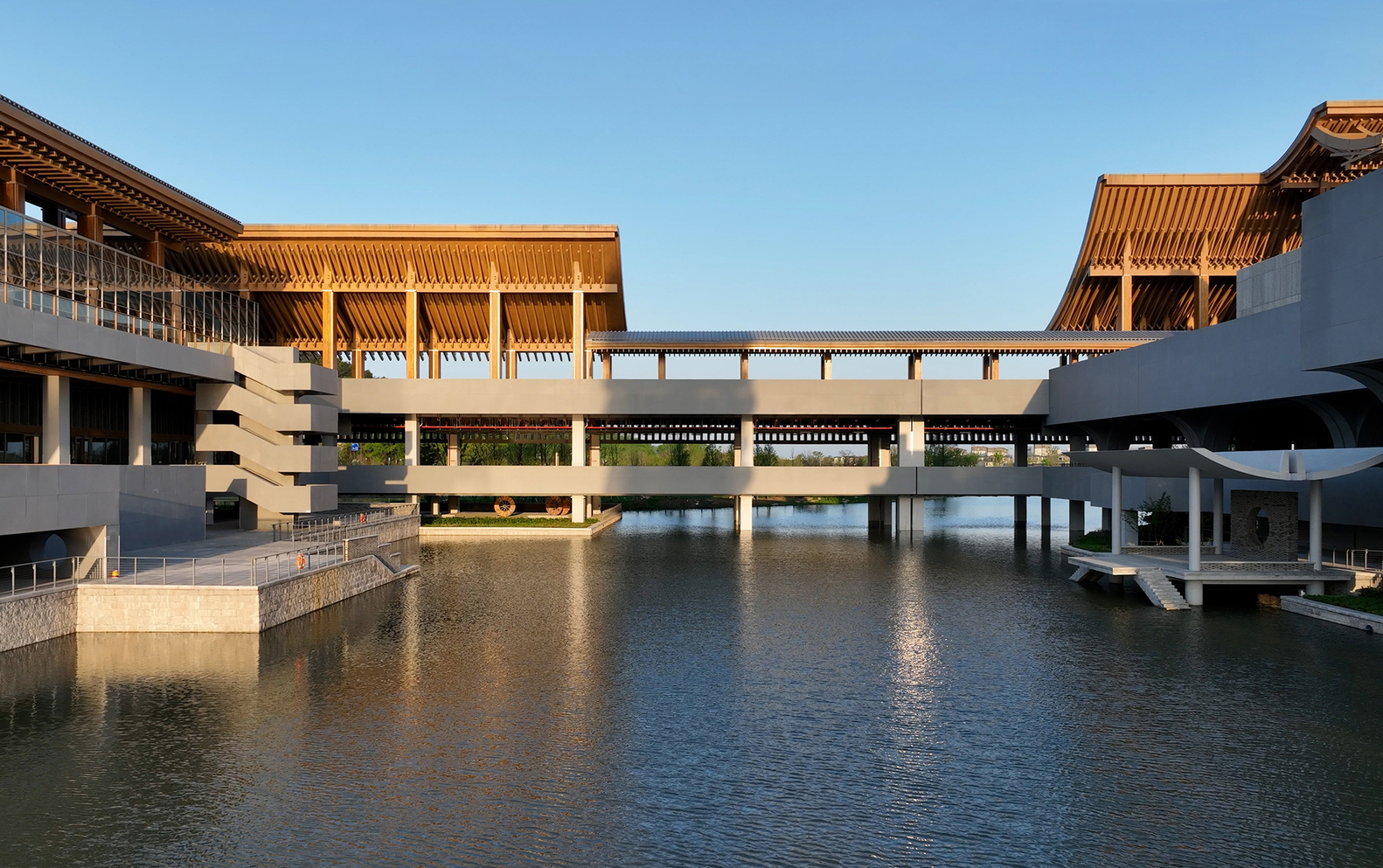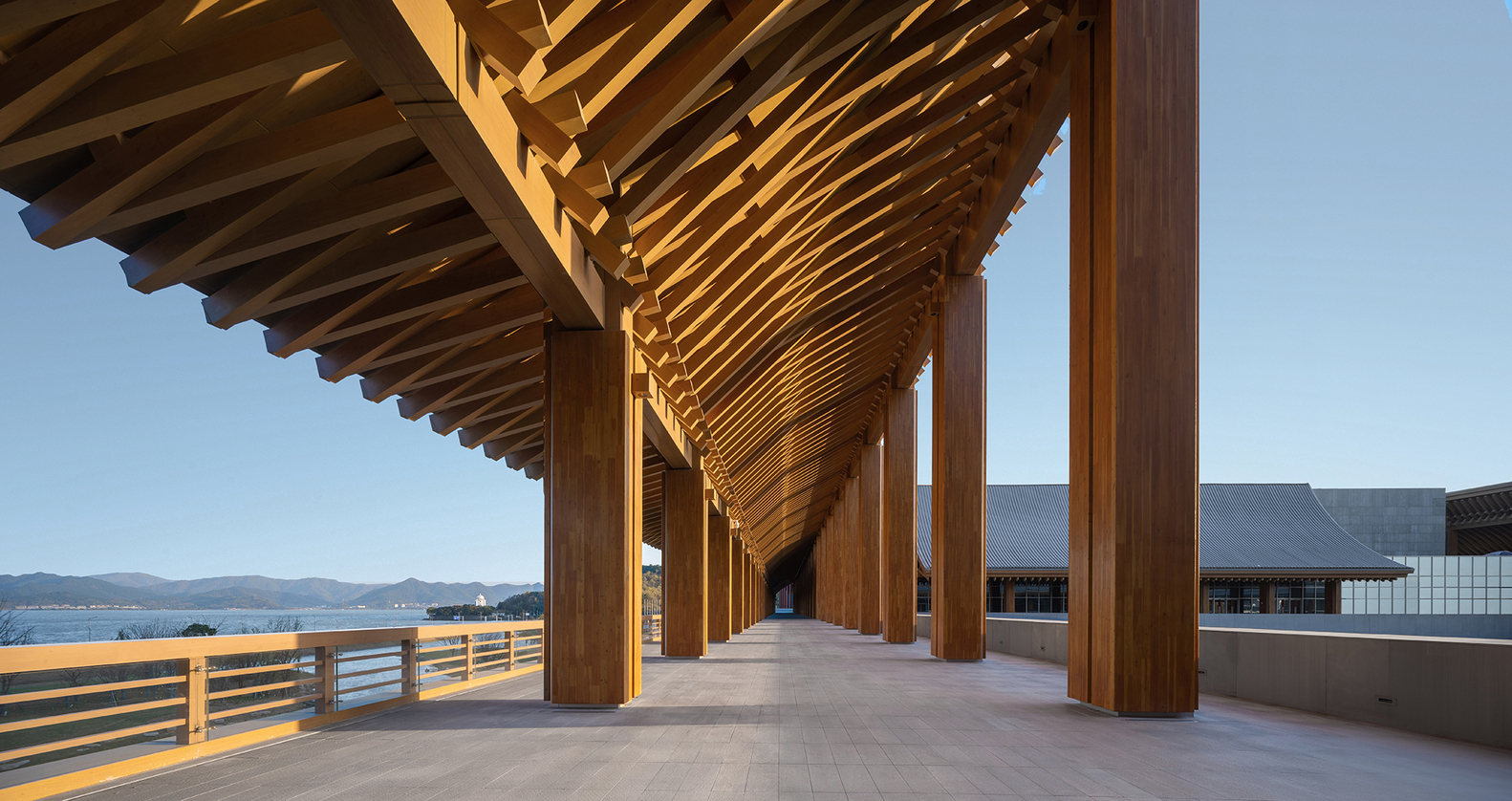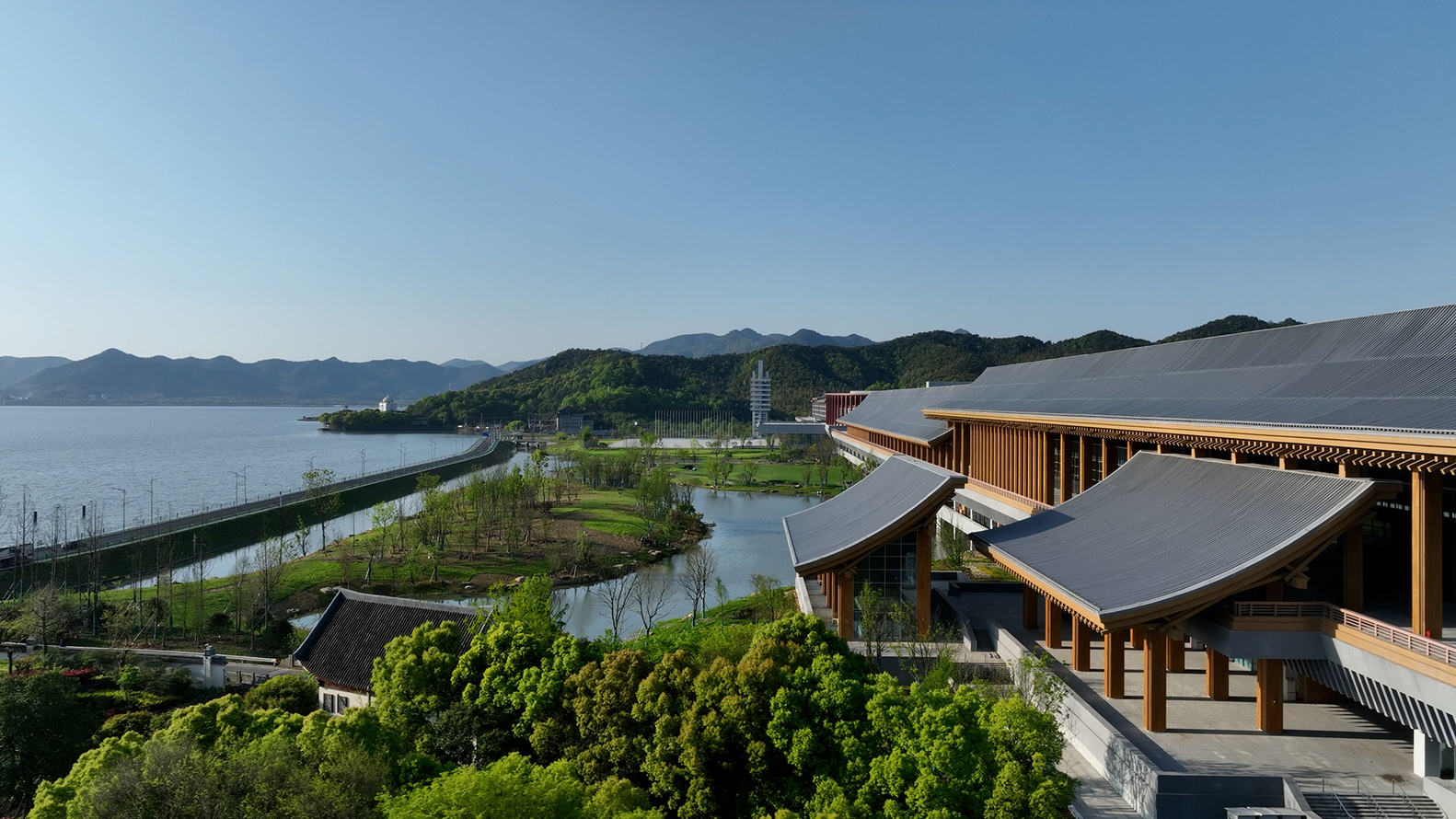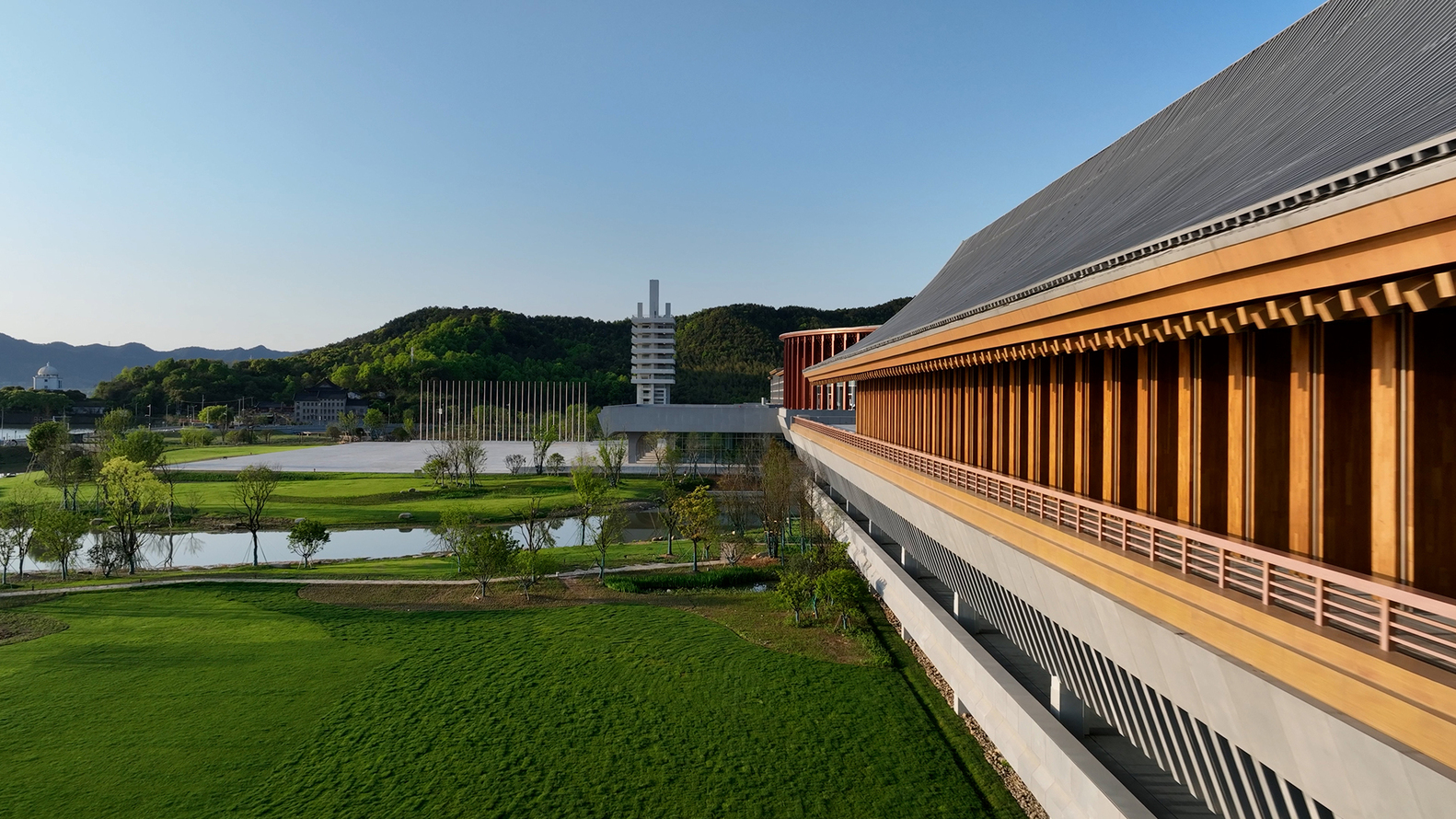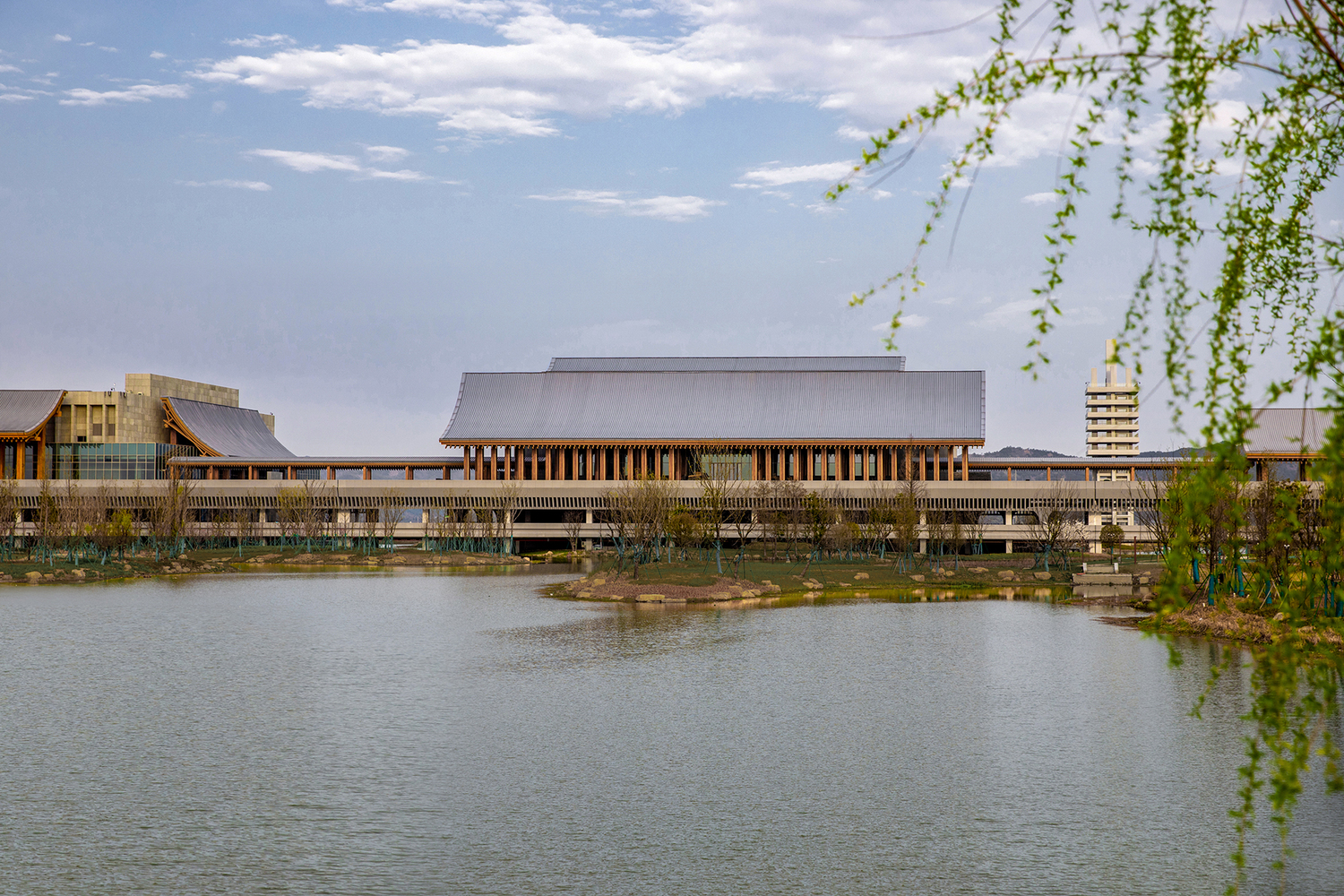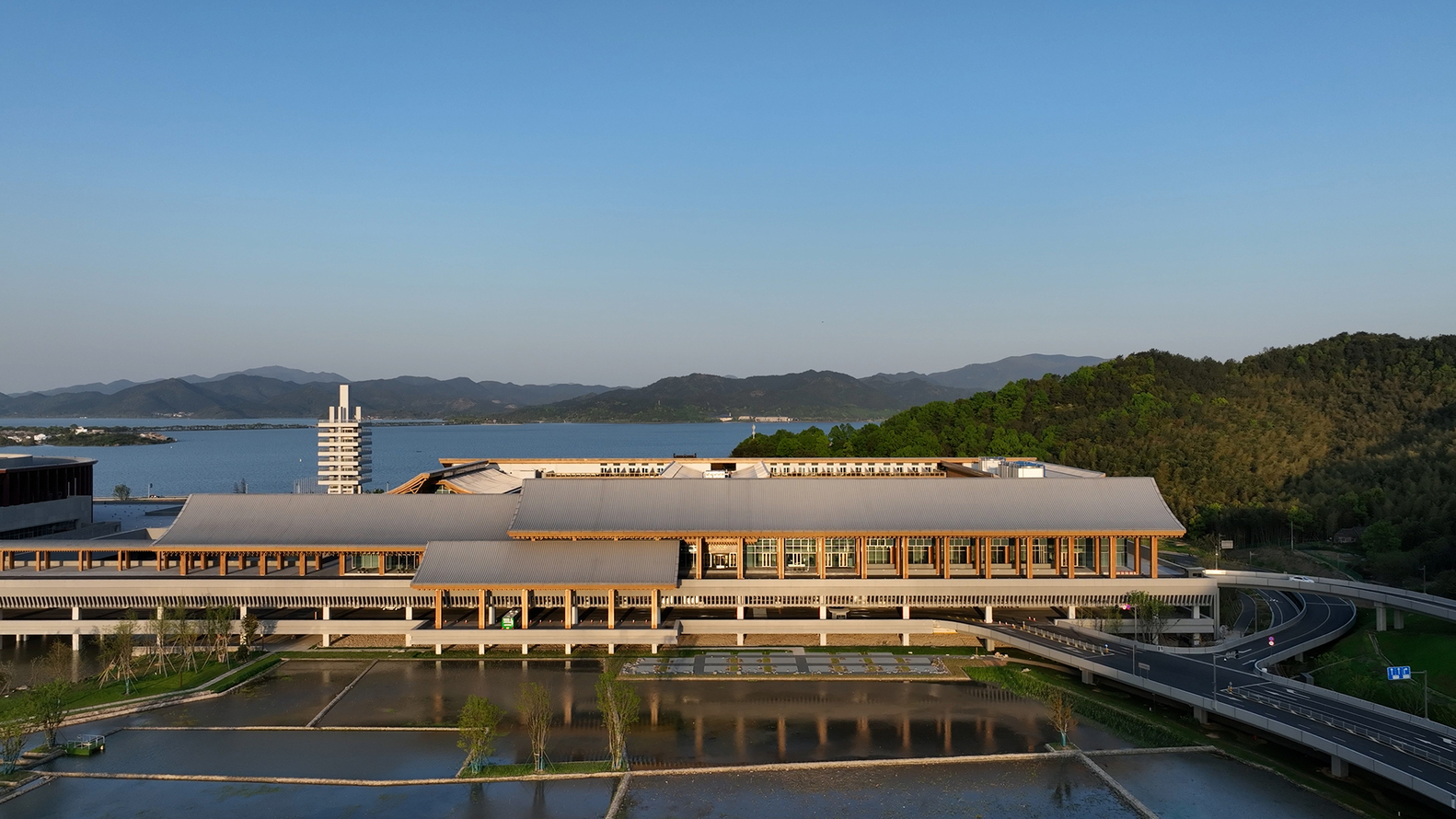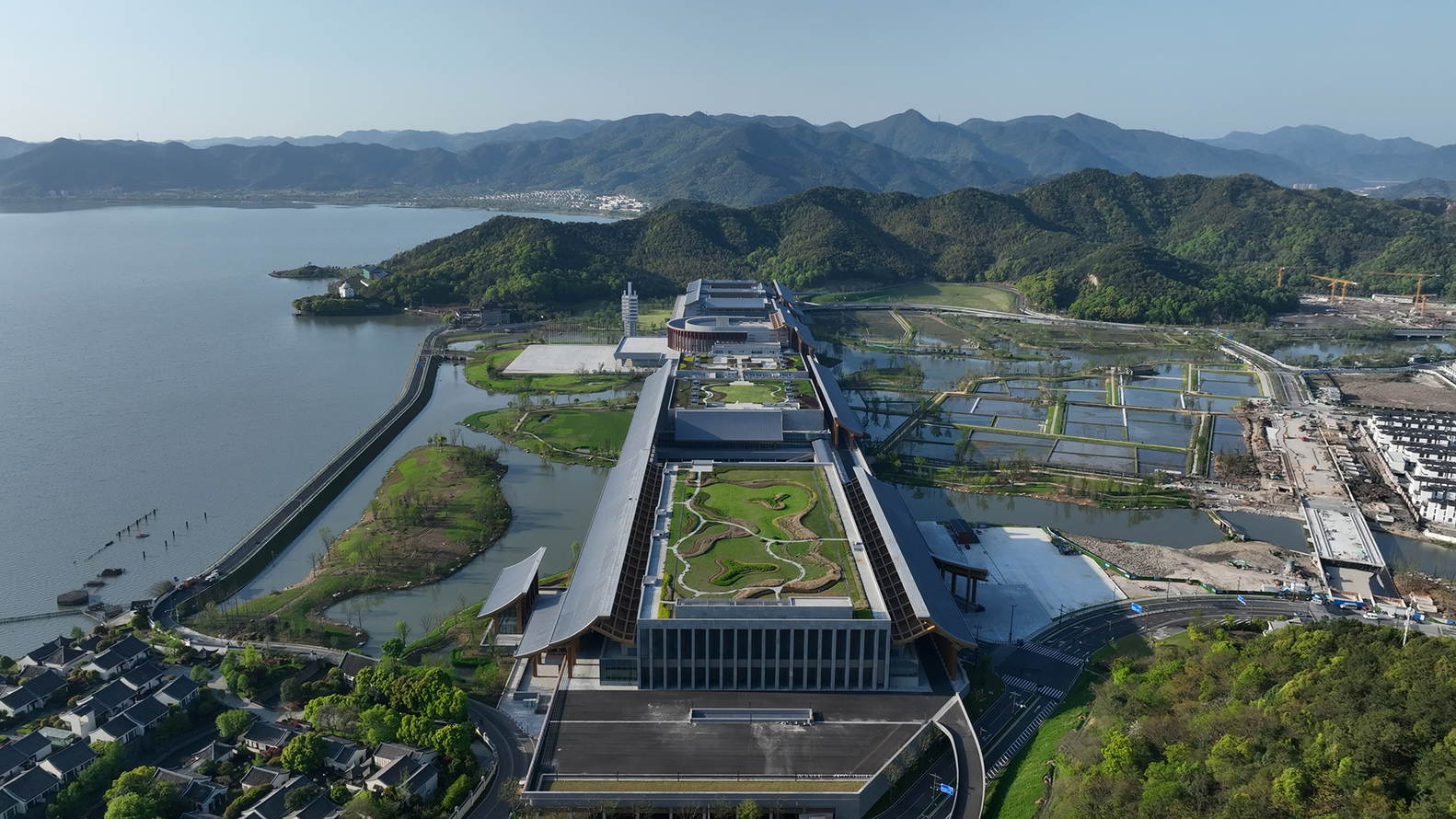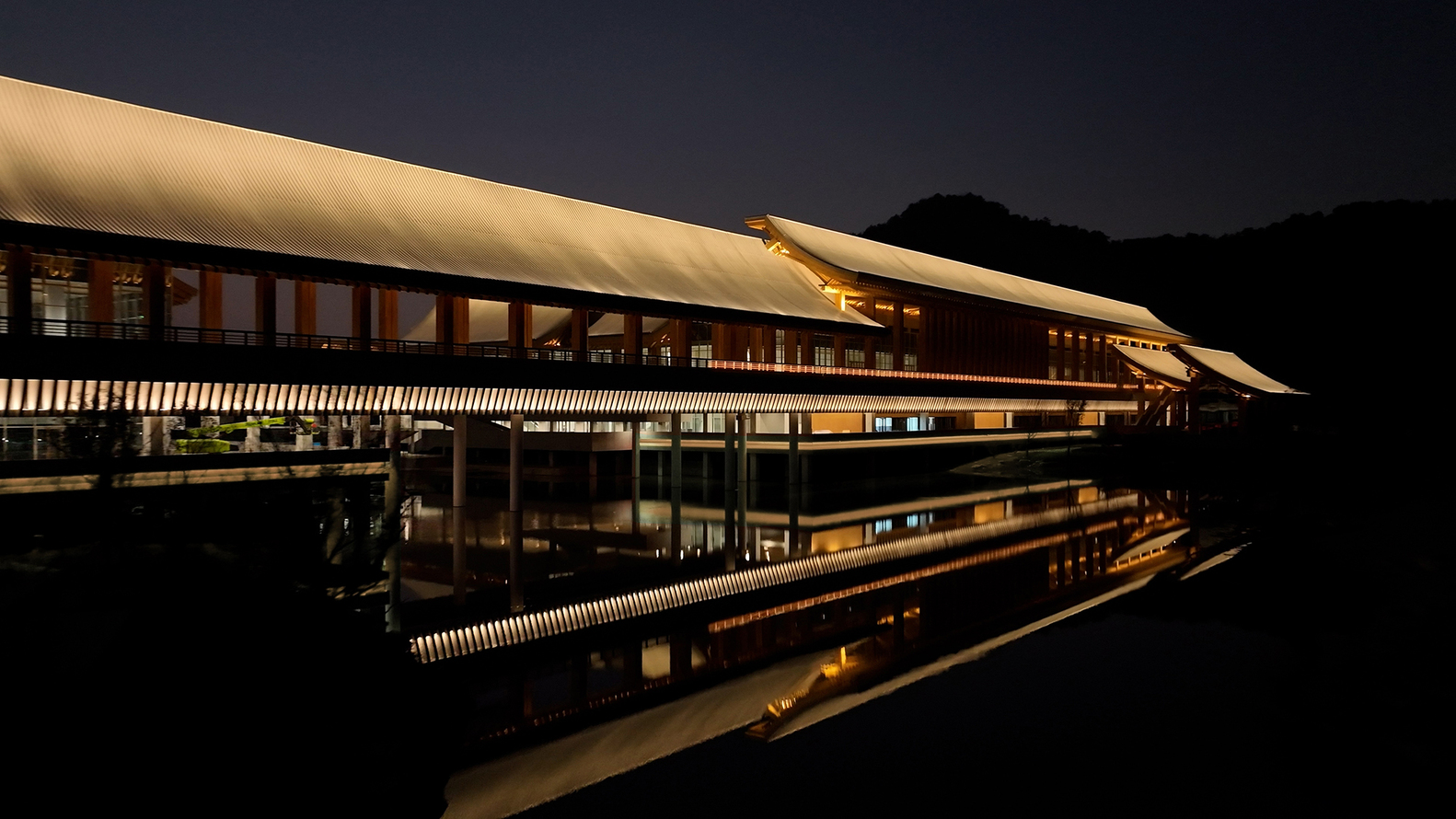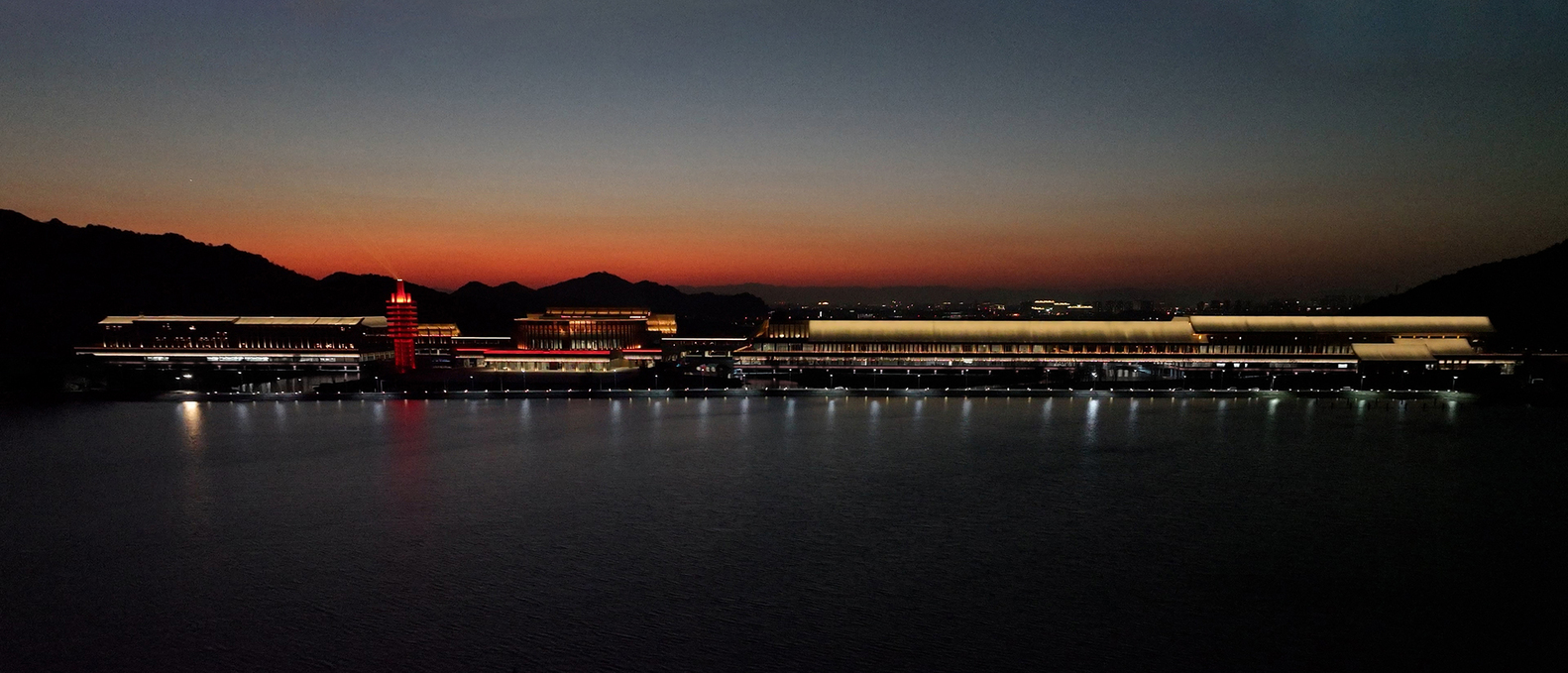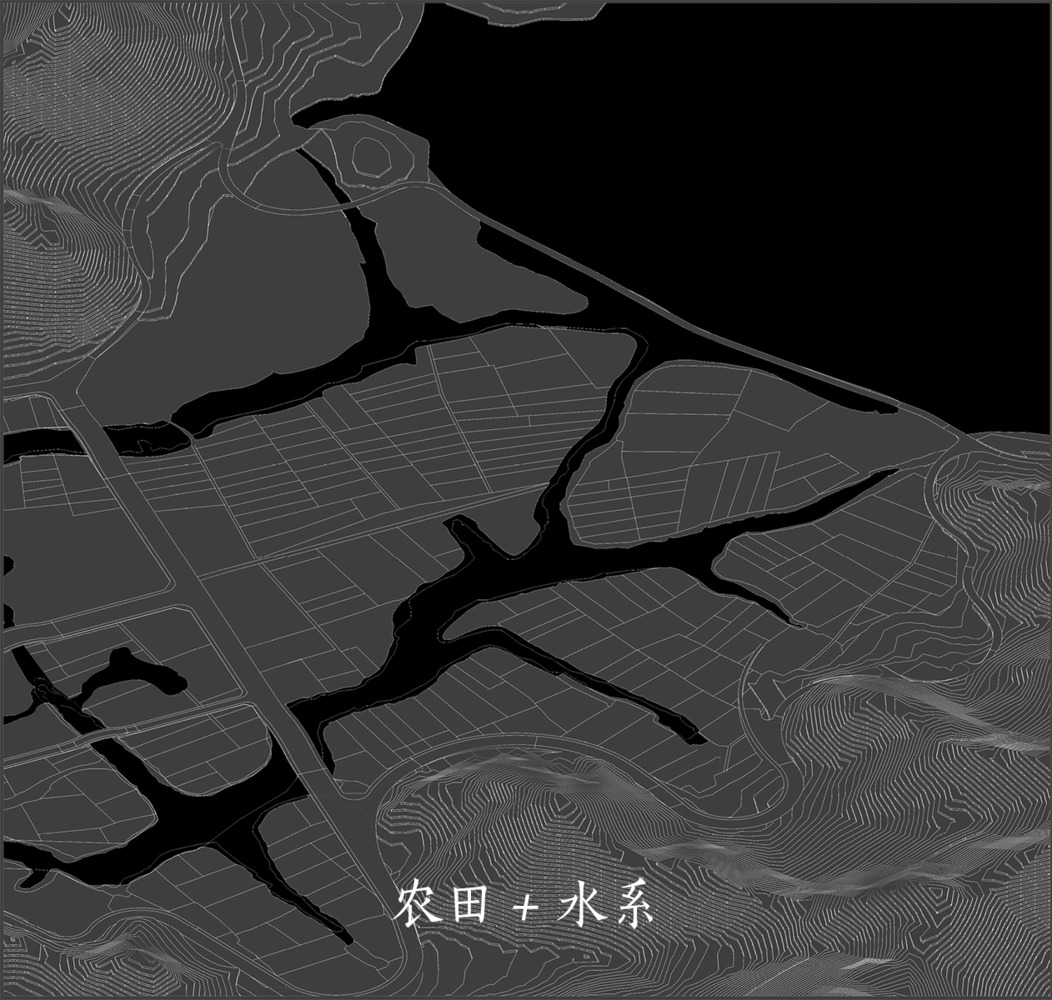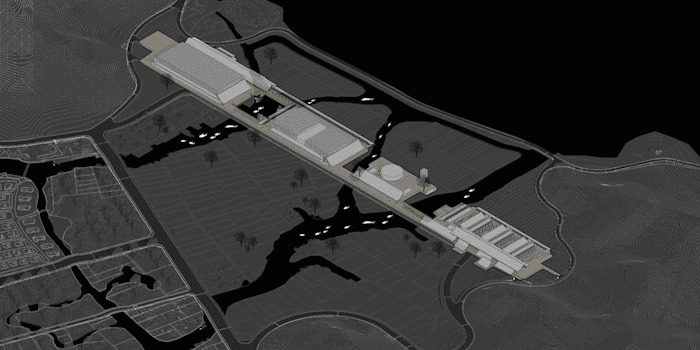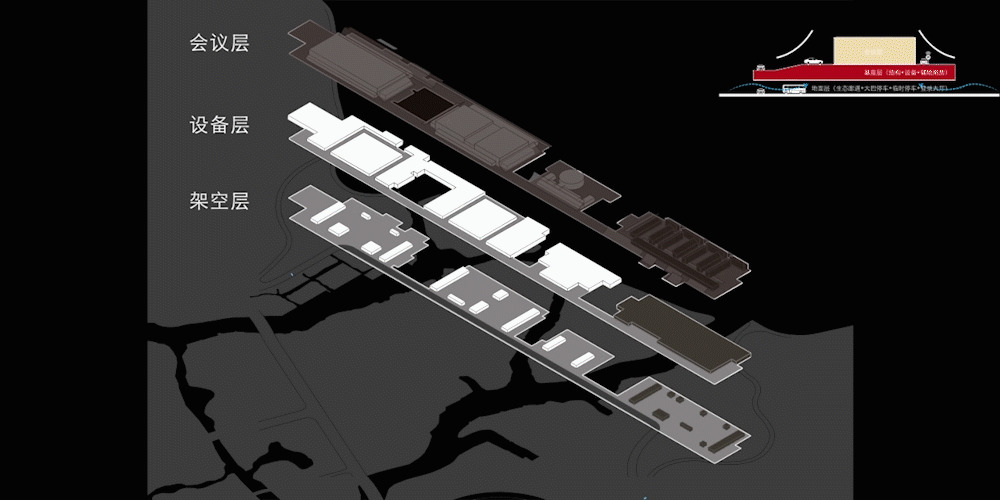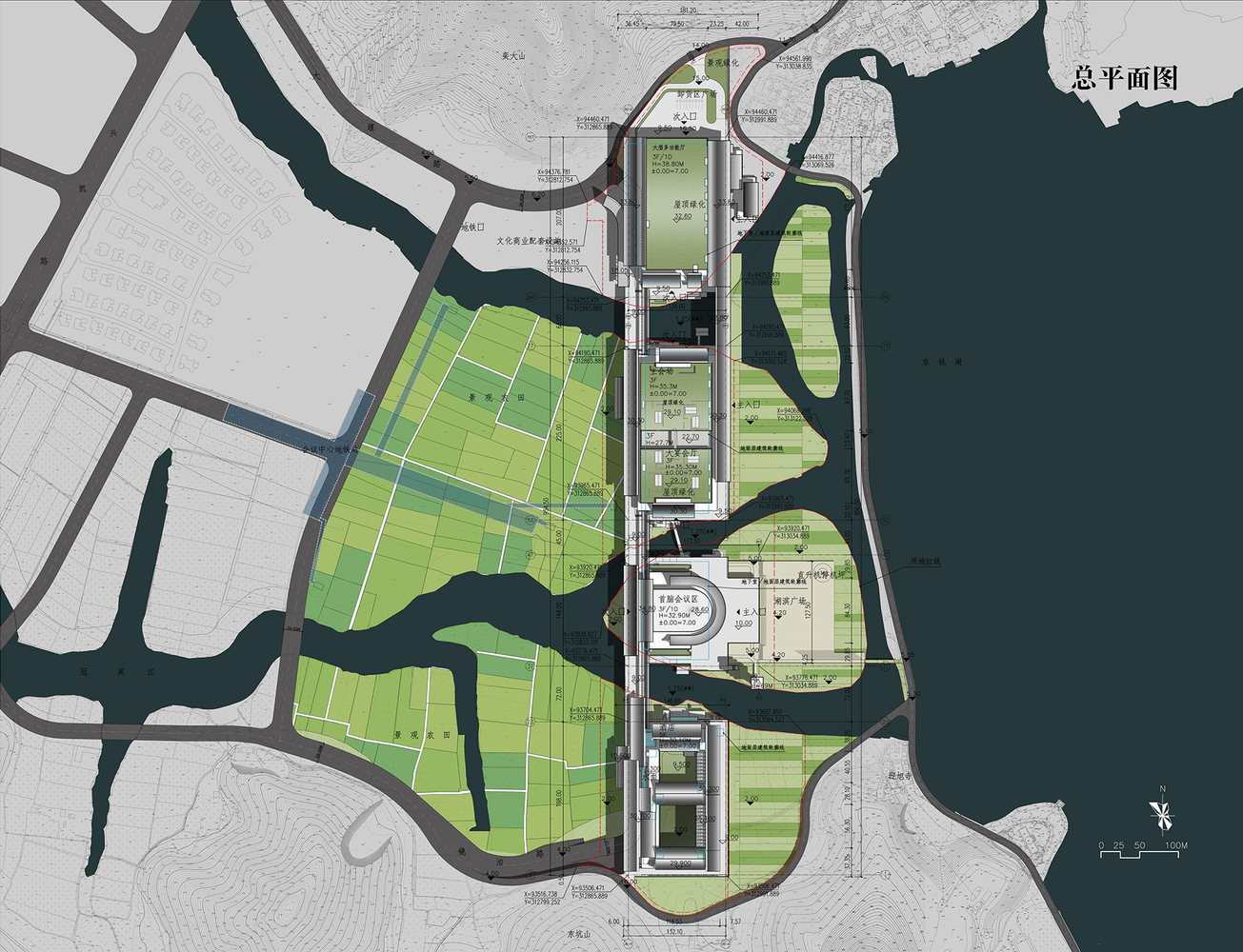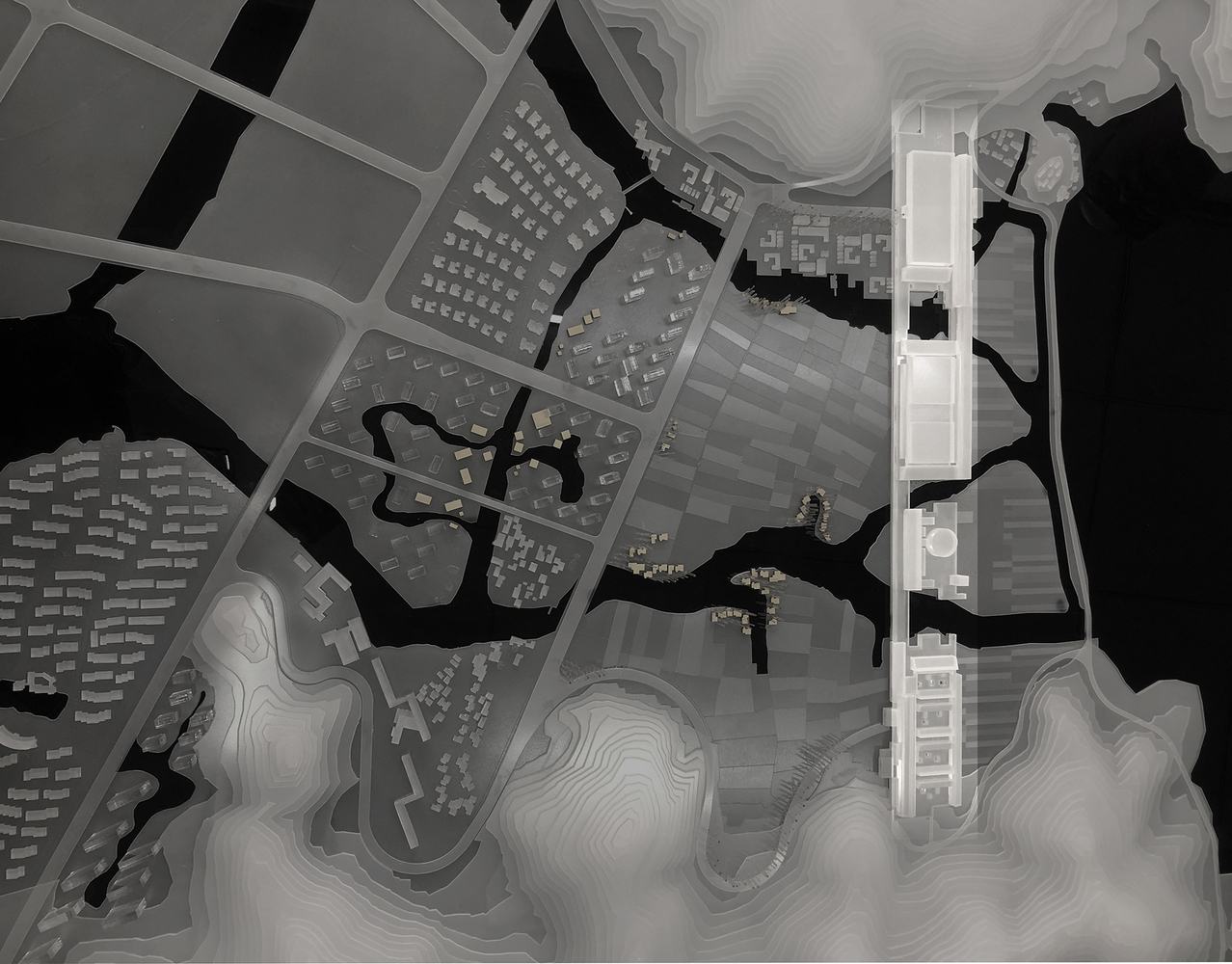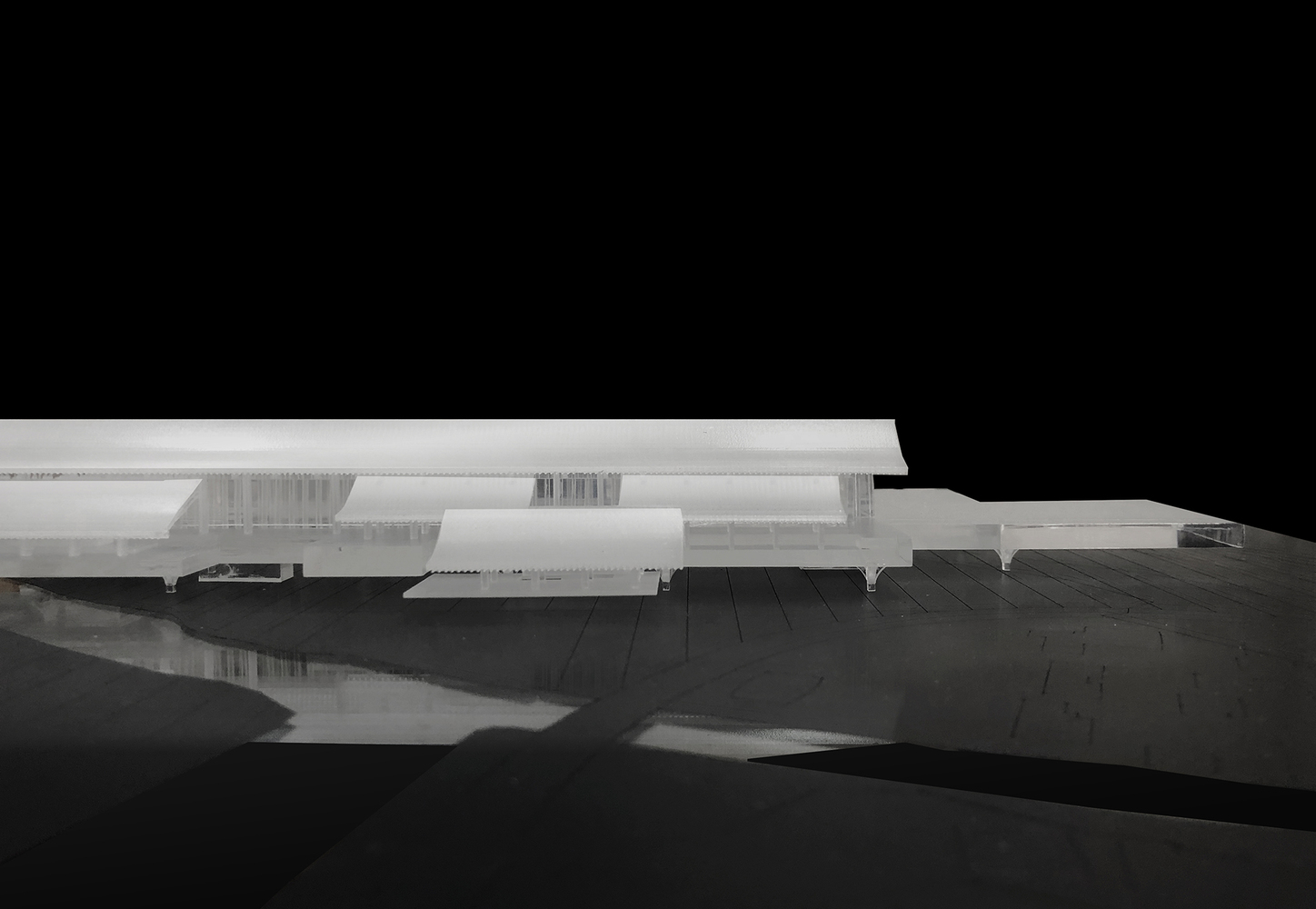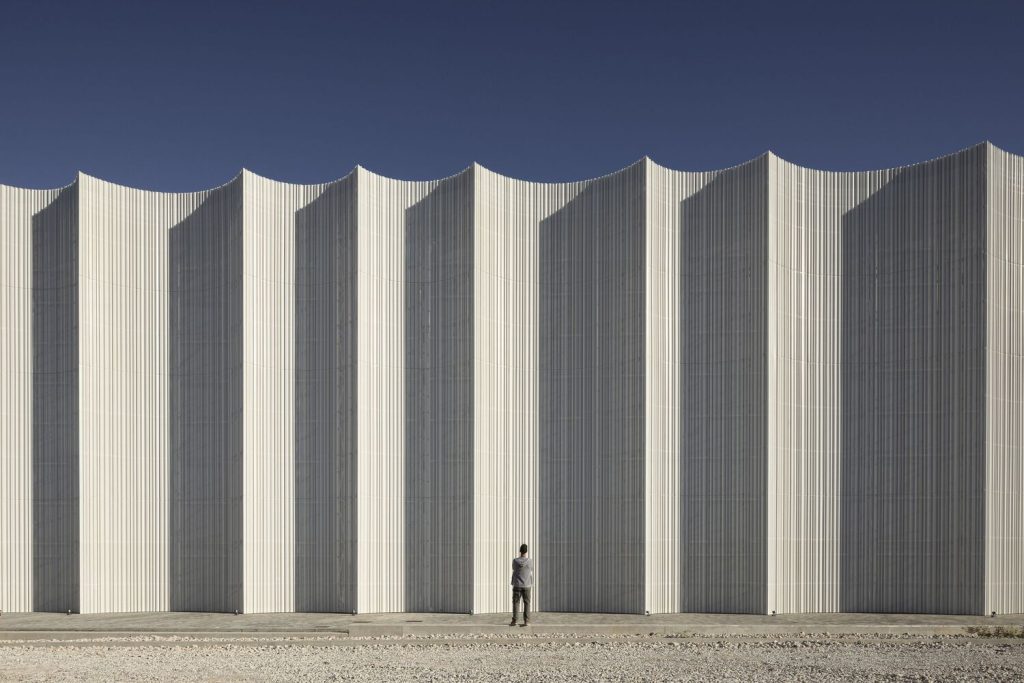
Ningbo International Conference Center / Tanghua Architects
Tanghua Architects has conceived a conference center in the form of a covered bridge surrounded by picturesque mountain and river landscapes. The scheme, with distinctive design and a response to the genius loci, stood out among other proposals in an international competition and has been successfully executed. The conference center serves as a venue for government affairs and business activities related to the “Belt and Road Initiative” and “Yangtze River Delta Integration Plan”. Furthermore, it symbolizes national culture and plays the role of a bridge connecting Ningbo and the world.
The conference center is located in the Dongqian Lake Scenic Area on the southeast outskirts of Ningbo City. Adjacent to the west shore of Dongqian Lake and connected to two mountains on its north and south sides, the core plot spans about 49 hectares (735 mu). It’s where the streams, rivers, lakes, mountains, lotus ponds, water outlets and riverbanks meet, and expansive paddies and wetlands unfold across thousands of square meters.
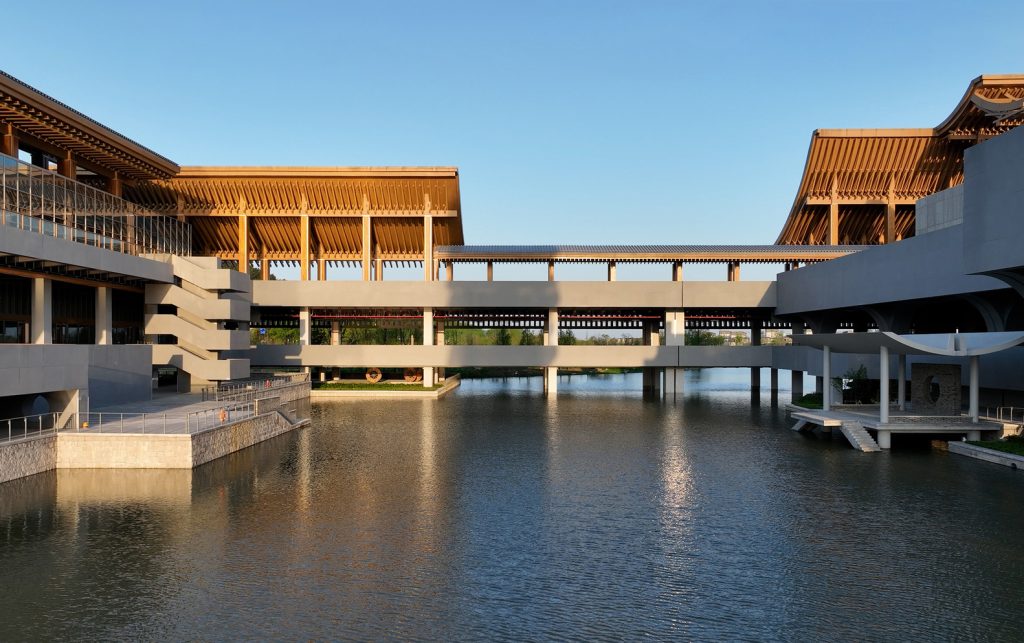
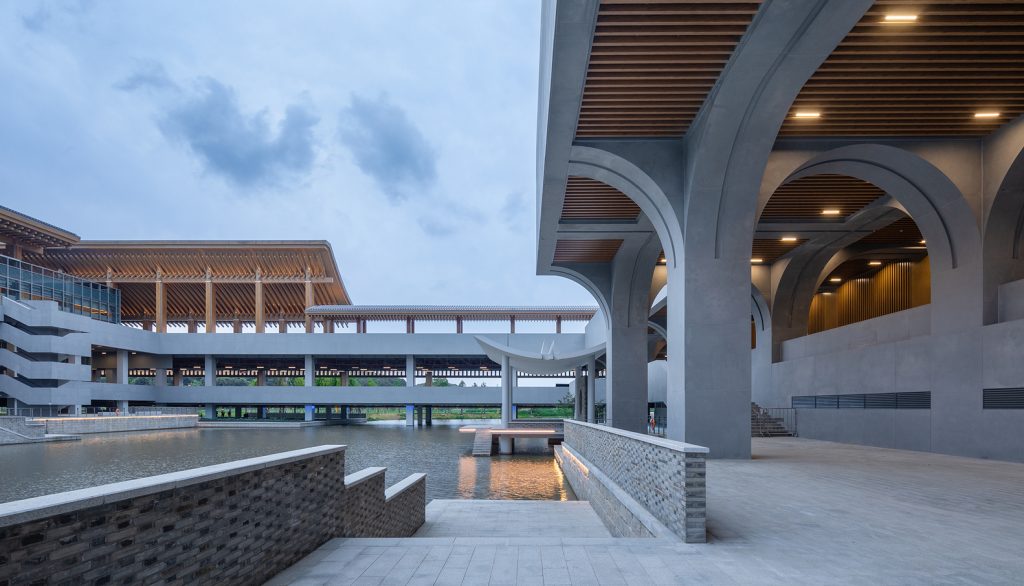
Ecological conservation and environmental friendliness.
We have preserved the site’s existing topography, water system and ecosystem, with the conference center arranged overhead in a north-south belt-shaped area. The compact configuration of the building ensures the preservation of 36.7 hectares of agrarian landscape, embodying a romantic retention of agricultural landscape in the era of rapid urban expansion. On one hand, this allows for flexibly reserved land for potential future urban development; On the one hand, the existing farmland has become an ecologically continuous transition zone that facilitates “city-field symbiosis”.
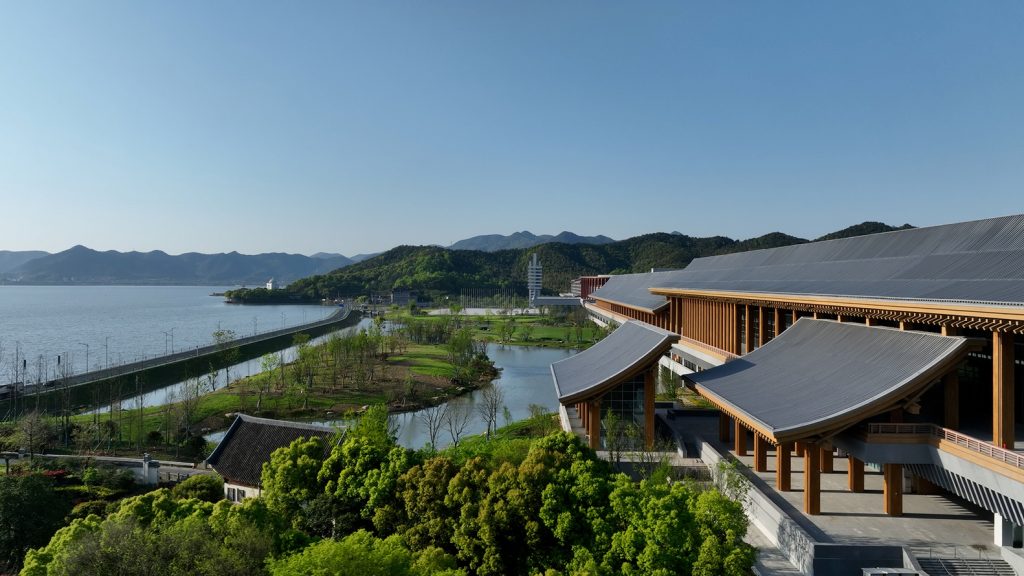
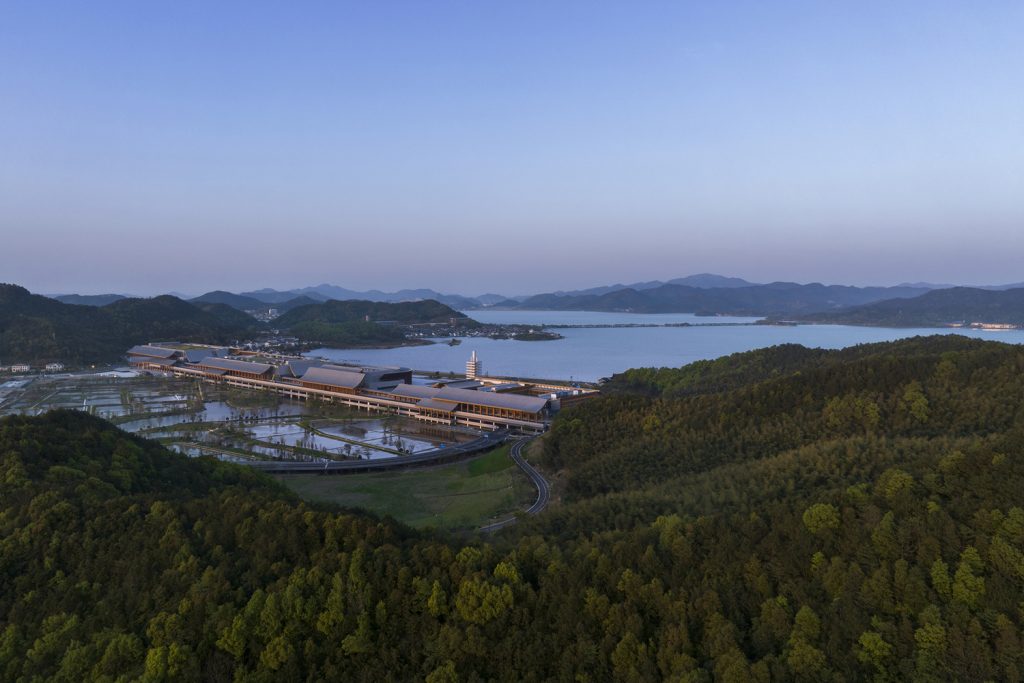
Programs and scale.
The covered bridge is divided into four areas with three water outlets with the programs arranged according to the public-private logic from north to south. The northern part of the layout is an 11,000㎡ large-scale multi-purpose hall, which is followed by the 5,500㎡ main venues, the 3,700㎡banquet hall, and the 1,800㎡summit area. The southern part is a five-star hotel with 342 rooms. The three water outlets naturally become landscape nodes between the functional volumes and open spaces. Small-scale streets and commercial settlements that are connected to the conference center are arranged along the water, together with the villages, market streets, and temples, they constitute a multi-dimensional urban scene.
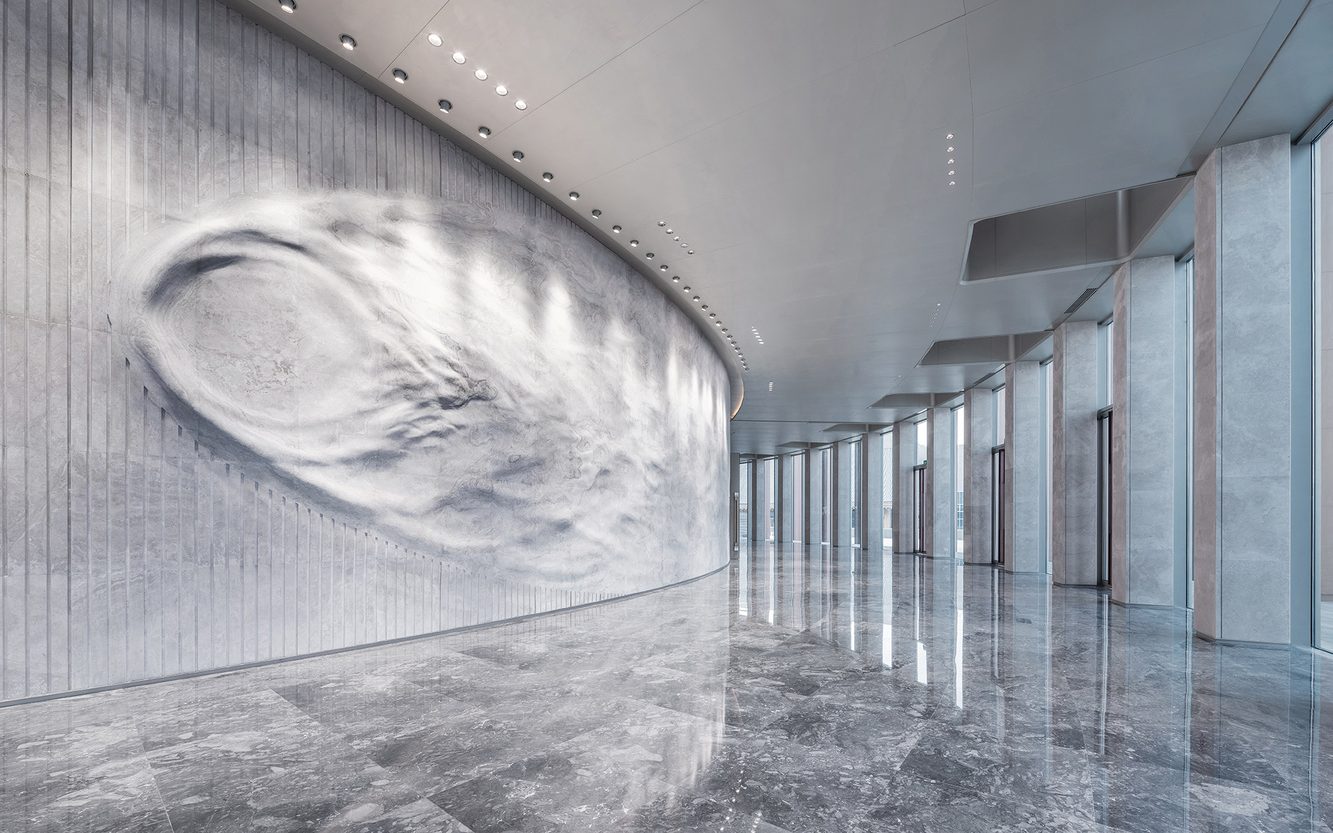

Circulation
The main building volume is elevated to 5m in height, with the main structure, equipment and service functions packed into a 5m height volume. The conference floor is 10 meters above the site’s ground. Taking advantage of the site’s height variance between the north and the south, the conference center can be connected to the city road at different heights, realizing three-dimensional traffic. When hosting meetings, attendees enter the conference center from the upper level and exit from the lower level, while service circulation and freight circulation are organized separately. With multiple exits connecting with the urban public transportation network, smooth assemblage and evacuation are ensured.
When the conference venues are closed, the covered bridge and the commercial streets are open to the public round the clock, transforming into an iconic market and settlements reminiscent of Jiangnan water towns. The covered bridge is not just a simple bridge, but rather, a building in the form of a bridge. It serves as a multi-functional public open space, providing shelter from the sun and rain, as well as a place for people to rest, communicate, gather, and enjoy the scenery. This unique structure also contributes to establishing an educational hub that blends the elements of local culture, history, and science.
Environmental conservation and energy efficiency.
The emphasis on environmental conservation, energy efficiency, and emissions reduction is integrated into individual buildings and the urban infrastructure network. The project site is located next to Gaoqiu Weir, an important area for flood diversion and storage as part of the Dongqian Lake flood control system. To minimize the impact on the local hydrological environment, the design team conceived a stilted bridge-style building elevated above the fields. This allows for a close view of Dongqian Lake without altering the intrinsic properties of Gaoqiu Weir. To reduce rainwater runoff and water pollution, green roofs are employed, while permeable paving materials are used to retain large areas of green space and increase water infiltration and replenishment.
Additionally, on-site renewable PV energy is used to provide hot water, and a geothermal heat exchange system is implemented to enhance energy conservation and save space resources. Tracing back to the cultural origin of Ningbo City, agriculture can be regarded as the root of the Hemudu culture. By preserving the natural wetland on the site, our design juxtaposes the high-density, fast-paced urbanized area with the idyllic natural space, and integrates the cultural tourism industry system with the exhibition industry system. It’s the nexus between the regional culture and the modern city, a contemporary Jiangnan water town where the rivers and lakes meet and accommodate both farming and commerce and a Ningbo sample of the people’s longing for a better life.
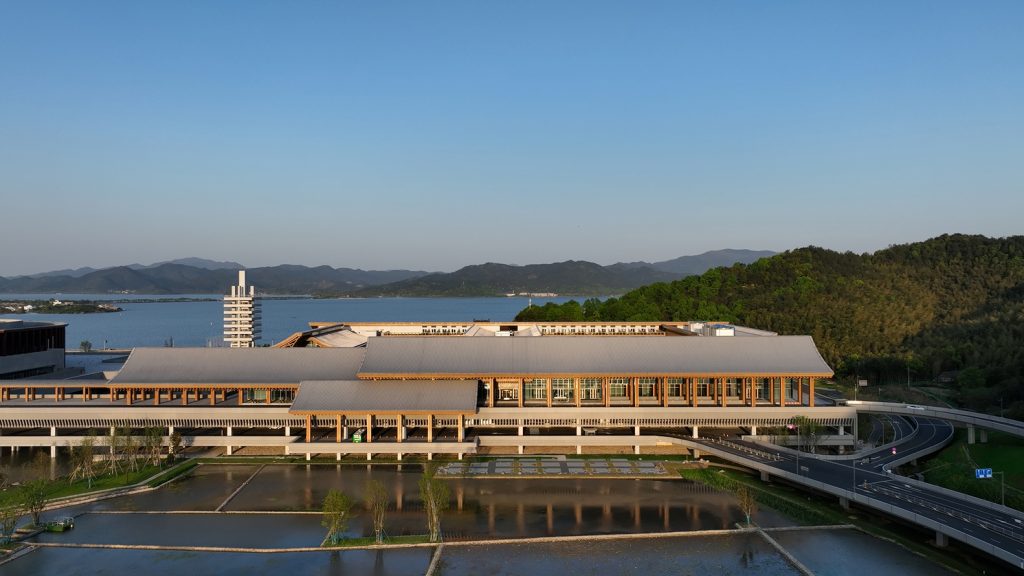
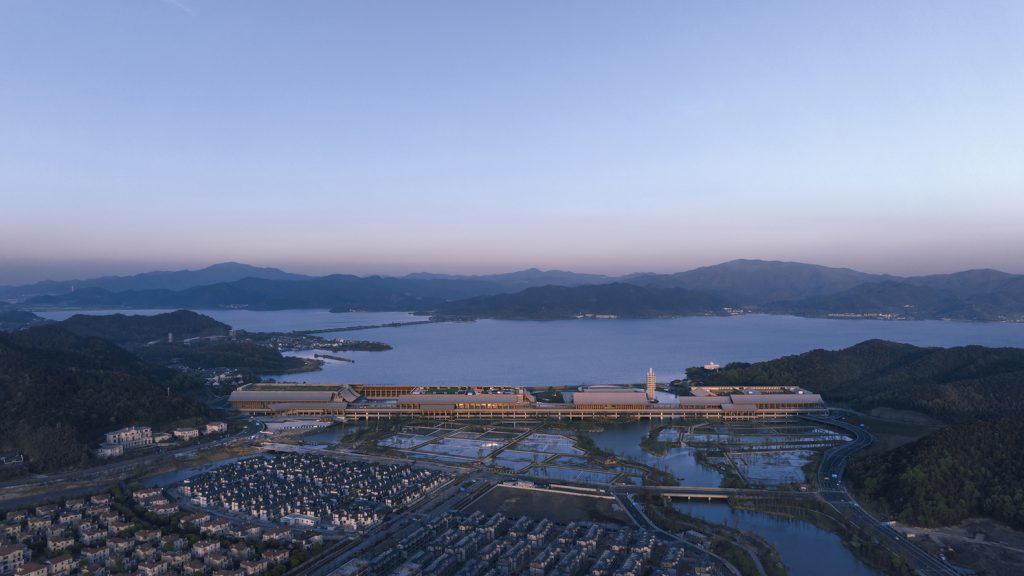
- Architects: Tanghua Architect & Associates
- Area: 398413 m²
- Year: 2023
- Photographs: Tanghua Architects, Beijing Institute of Architectural Design (BIAD), Beijing BIAD Decoration Engineering, MMCM
- Lead Architect: Hua TangArchitectural Design: Shan Yang, Jun Teng, Yibing Qiao, Xiaochen Guo, Lijun Kang, Shangwen Sun, Yanhao Zhao, Dawei Zhao, Yirun Jin, Shujing Li, Chen Liu, Chengqi Wei, Chenxi Jiang
- City: Ningbo
- Country: China
